Bezpłatny fragment - The Perfect Shot Unlocking the Secrets of Precision Shooting
Protection of Persons and Property
Act of August 22, 1997 on the protection of persons and property
Article 1. The Act specifies:
Areas, facilities and devices subject to mandatory protection; principles of creating and operating internal security services; principles of running a business in the field of personal and property protection services; required qualifications and authorizations of security staff; supervision over the functioning of the protection of persons and property; rules for protecting transported weapons, ammunition, explosives, weapons, devices and military equipment.
Article 2. The terms used in the Act mean:
Unit manager a person or body of an entrepreneur or other organizational unit authorized, in accordance with the law, statute, contract, to manage it; the liquidator or trustee is also considered to be the manager of the entity; area subject to mandatory protection, area specified by the ministers, heads of central offices and voivodes, separated and appropriately marked;
protection of persons — activities aimed at ensuring safety of life, health and personal integrity; property protection, actions to prevent crimes and offenses against property, as well as preventing damage resulting from these events and preventing unauthorized persons from entering the protected area; security employee, a person entered on the list of qualified physical security employees or qualified technical security employees, and performing security tasks as part of the internal security service or for an entrepreneur who has obtained a license to conduct business activities in the field of protection of persons and property, or a person performing security tasks, to the extent that does not require entry on these lists, for the entrepreneur, who has obtained a license to run a business in the field of personal and property protection services; specialized armed protective formations, internal security services and entrepreneurs who have obtained licenses to conduct business activities in the field of personal and property protection services, possessing weapons on the basis of the weapons certificate referred to in Art. 29 section 1 point 1 and 2 of the Act, installation of electronic alarm devices and systems signaling threats to protected persons and property, as well as operation, maintenance and repairs in the places where they are installed, installation of devices and mechanical security measures as well as their operation, maintenance, repairs and emergency opening at installation sites.
Art. 4. 1. The Act does not violate the provisions regarding the protection of areas, facilities and equipment of organizational units subordinated to, subordinated to or supervised by: 1) the Minister of National Defense, the minister responsible for internal affairs, the Minister of Justice, the minister responsible for foreign affairs, the Head of the Internal Security Agency, the Head of the Foreign Intelligence Agency, the Head of the Central Anti-Corruption Bureau, as well as regulations regarding the protection of weapons transport, ammunition, explosives, weapons, devices and military equipment manufactured by these units. The Act does not violate the provisions relating to the organization and principles of operation of other armed services and protective formations established on the basis of separate acts.
The Act does not apply to the Marshal’s Guard subordinated to the Speaker of the Sejm. Areas, facilities, equipment and transports subject to mandatory protection Article 5. 1. Areas, facilities, equipment and transports important for defense and the economic interest of the state, public security and other important interests of the state are subject to mandatory protection by specialized armed protection formations or appropriate technical security. To the areas, facilities and devices referred to in section 1, include: in the field of state defense, in particular: special production plants and plants in which scientific research or design work is carried out in the field of such production, plants producing, renovating and storing armaments, military devices and equipment, warehouses of strategic reserves referred to in Art. 15 of the Act of October 29, 2010 on strategic reserves (Journal of Laws of 2017, item 1846); in the field of protection of the economic interest of the state, in particular: plants directly related to the extraction of mineral resources of strategic importance for the state, sea and airport ports, banks and enterprises producing, storing or transporting monetary values in significant quantities; in the field of public safety, in particular: plants, facilities and devices that are important for the functioning of urban agglomerations, the destruction or damage of which may pose a threat to human life and health and the environment, in particular power plants and heating plants, water intakes, waterworks and sewage treatment plants, plants using, producing or storing in significant quantities nuclear materials, radioactive sources and waste, toxic, narcotic, explosive or chemical materials with high susceptibility to fire or explosion, fuel pipelines, power and telecommunications lines, water dams and locks and other devices located in open areas, the destruction or damage of which may pose a threat to human life or health, the environment or cause serious material losses; in the field of protection of other important interests of the state, in particular: plants with unique economic production, telecommunications, postal, television and radio facilities and devices, museums and other facilities containing national cultural goods, state archives; facilities, including buildings, devices, installations and services included in the uniform list of facilities, installations, devices and services included in critical infrastructure.
Detailed lists of areas, facilities and equipment referred to in section 2, prepared by: the President of the National Bank of Poland, the National Broadcasting Council, ministers, heads of central offices and voivodes in relation to subordinated, subordinated or supervised organizational units. Listing of a specific area, facility or device is made by way of an administrative decision. The lists referred to in section 3, the President of the National Bank of Poland, the National Broadcasting Council, ministers and heads of central offices send it to the territorially competent voivodes and update it on an ongoing basis. Voivodes keep records of areas, facilities and devices subject to mandatory protection located in the voivodeship. The records are confidential. The voivode, by way of an administrative decision, may include in the register referred to in section 5, areas, facilities and equipment of entities other than those specified in section 5 located within the voivodeship. 3. Art. 6. 1.
The minister responsible for internal affairs, at the request of the President of the National Bank of Poland, the National Broadcasting Council and interested ministers or heads of central offices, may introduce for organizational units subordinated to or subordinated to the requesting authority or supervised by it regulations of general conditions and procedures for the protection of areas, facilities and devices referred to in Art. 5. 2. The minister responsible for internal affairs, after consulting the President of the National Bank of Poland, will determine, by way of a regulation, the requirements for the protection of monetary values stored and transported by entrepreneurs and other organizational units, taking into account the need to ensure an appropriate level of security of the protected monetary values. Art. 7. 1. The head of the unit, who directly manages the areas, facilities and devices included in the register referred to in Art. 5 section 5, or a person authorized by him, are obliged to agree on the protection plan for these areas, facilities and devices with the territorially competent Provincial Police Commander, and in the case of threats of a terrorist nature, with the territorially competent director of the delegation of the Internal Security Agency. The head of the unit referred to in section 1, no later than 3 days before the planned date of commencement of transport subject to mandatory protection, is obliged to agree with the Provincial Police Commander, territorially appropriate for the place of departure of the transport, a security plan for this transport. The provision of section 2 shall apply accordingly. The protection plan should: take into account the nature of the production or type of activity of the entity; include an analysis of the state of potential threats, including terrorist threats, and the current security status of the unit, provide an assessment of the current security status of the unit; contain data on the specialized armed security formation, including: staffing level, type and quantity of weapons and equipment, method of securing weapons and ammunition; contain data on the type of technical security; include the principles of organizing and implementing individual protection. When agreeing on the protection plan, the Provincial Police Commander takes into account the potential threat level of the individual and the requirements specified in applicable law. Refusal to agree on a protection plan is made by way of an administrative decision. Internal security services Art. 8. Internal security services in particular: ensure protection of property within the boundaries of protected areas and facilities; ensure protection of important unit equipment located outside the boundaries of protected areas and facilities; escort property of an individual; perform other tasks resulting from the unit’s protection plan. Internal security services, appointed by entrepreneurs may provide services in the field of protection of persons and property after obtaining the license referred to in Art. 15. Art. 9. Internal security services report to the head of the unit or a person authorized in writing by him, directly subordinated to this head. Art.9a.1. The head of the unit issues a qualified physical security employee’s ID to an employee entered on the list of qualified physical security employees or a qualified technical security employee’s ID to an employee entered on the list of qualified technical security employees, who are part of the internal security service subordinated to him. The ID cards referred to in section 1, contain: an individual number consistent with the ID card records referred to in section 3; current photo of the employee; employee’s name and surname; name, address and telephone number of the unit where the internal security service provides security; information about the statutory rights of its holder; date and place of issue and name, surname and signature of the head of the unit. The ID cards referred to in section 1, may contain the stamp of the head of the unit. The head of the unit keeps records of the ID cards referred to in section The minister responsible for internal affairs will determine by way of regulation: ID templates referred to in section 1, the procedure and conditions for issuing, exchanging or returning them, the method of keeping records of the ID cards referred to in section 3 taking into account the uniformity of used ID cards, documentation and procedures related to their issuance, exchange or return, as well as the possibility for the interested person to read the data contained in these ID cards. Art. 10.1. The territorially competent provincial police commander may, by way of an administrative decision, issue a permit to establish an internal security service in a unit that does not include areas facilities and devices included in the records referred to in Art. 5 section 5, at the request of the managers of these units, justified by important economic or public interest. The application should contain the information referred to in Art. 7 section 2. The provisions of section 1 does not apply to internal security services, operating in the areas of organizational units subordinated to, subordinated to or supervised by the Minister of National Defense. Art. 11. 1. Authorization to establish an internal security service, referred to in Art. 10 section 1, may not be issued if: the protection plan does not contain the information referred to in Art. 7 section 2; the applicant entity does not ensure compliance with the conditions arising from the regulations issued under the Act. The Provincial Police Commander, by way of an administrative decision, withdraws the permit for the operation of the internal security service if: the head of the unit submits such an application; no internal security service was established within 3 months from the date of issue of the permit; gross deficiencies or irregularities in the internal organization of the security service identified during the inspection were not removed within the prescribed deadline; the activities of the internal security service are conducted inconsistently with the security plan; circumstances have ceased, for which the permit has been issued. From the decisions referred to in section 1 and 2 may be appealed to the Chief Commander of the Police. Art. 12. Internal security services cooperate with the Police, fire protection units, civil defense units and municipal (municipal) guards in the field of protection of persons and property. Art. 13.
The minister responsible for internal affairs will determine, by way of a regulation, for internal security services: detailed rules and the procedure for their creation; organizational structure, scope of activities and method of maintaining protective documentation; weapons and equipment; service uniforms and badges and how to create names for them. Art. 14.
The Minister of National Defense will specify, by way of a regulation, for internal security services operating in areas subordinated to, subordinated to or supervised by organizational units: the conditions and procedure for their creation; organizational structure and scope of activities; weapons and equipment; employment conditions of employees; service uniforms and badges. Principles of conducting business activity in the field of security services for persons and property and control of this activity Article 15. Starting a business activity in the field of security services for persons and property requires obtaining a license specifying the scope and forms of conducting these services.
Business activity within the scope referred to in Art. does not require a license. 3 point 2, if it does not apply to areas, facilities and devices specified in Art. 5 section 5. Art. 16. 1. The licensing authority competent to grant, refuse to grant, change, limiting the scope of business activity or the form of services and withdrawing business licenses in the field of protection of persons and property services is the minister responsible for internal affairs. Before granting a license, the licensing authority seeks the opinion of the Provincial Police Commander, competent for the registered office or place of residence of the entrepreneur, and before issuing the decisions referred to in section 1, other than granting a license, the licensing authority may seek the opinion of the commander. Art. 17. 1. A license is issued at the request of: an entrepreneur who is a natural person, if he is entered on the list of physical security workers or qualified technical security workers; entrepreneur other than a natural person, if the list of qualified physical security employees or qualified technical security employees includes at least one person who is a partner in a general partnership or limited partnership, or a member of the management body, a commercial proxy or an attorney appointed by the entrepreneur to manage the activities specified in the license, and the other persons authorized to represent the entrepreneur have not been punished for an intentional crime or an intentional fiscal crime. The application must be accompanied by original documents, a certified copy or certified translation. The application for granting a license should include: the entrepreneur’s business name, designation of his registered office and address or residential address; number in the register of entrepreneurs in the National Court Register or information about the entry in the Central Register and Information on Business and tax identification number (NIP); determining the scope and forms of economic activity for which a license is to be granted; date of commencement of the business activity covered by the license, addresses of the places of business activity covered by the application, including storing the documentation referred to in Art. 19 section 1 point 2 and 3; data of the entrepreneur who is a natural person, persons authorized or members of the body authorized to represent the entrepreneur, proxies and the attorney appointed to manage the activities specified in the license, including: a) name and surname, date and place of birth, citizenship, PESEL number, if assigned, series and number of the passport or other document confirming the identity and addresses of residence of these persons for permanent and temporary residence, f) information about entry on the list of qualified physical security employees or qualified technical security employees; information about licenses held, permits or entries in the register of regulated activities. The application for granting a license must be accompanied by the following documents: certificate of entry on the list of qualified physical security workers or qualified technical security workers; declaration of no criminal record of the entrepreneur and the persons referred to in Art.17 section 3 point 6, citizens of European Union Member States, Member States of the European Free Trade Association (EFTA) — parties to the Agreement on the European Economic Area and citizens of countries that are not parties to the Agreement on the European Economic Area, which may exercise freedom of establishment on the basis of the agreements concluded by those countries with the European Community and its Member States; a certified translation of the certificate of good conduct of entrepreneurs and persons other than those mentioned in point 2. The declaration referred to in section 5 point 2, is submitted under pain of Criminal liability for submitting false testimony. The person submitting the declaration is obliged to include the following clause: „I am aware of criminal liability for submitting a false declaration.” This clause replaces the authority’s instruction on criminal liability for submitting false testimony.
The minister responsible for internal affairs will determine, by way of a regulation, the template of the application submitted to the licensing authority by an entrepreneur applying for granting or changing a license to conduct business activities in the field of protection of persons and property, taking into account the data contained in section 3 and information about the documents required when submitting an application for a license, with a view to facilitating the activities related to submitting the application for entrepreneurs and ensuring the efficiency of the proceedings. Art. 17a.
The licensing authority may refuse to grant a license or limit its scope in relation to the application for granting a license or refuse to change the license: when the entrepreneur does not meet the conditions for performing the activities covered by the license specified in the Act; due to a threat to the defense and security of the state and the safety or personal rights of citizens; an entrepreneur whose business license specified in the Act was withdrawn within the last three years for the reasons listed in Art. 22 section 1 point 1, section 2 and 3, or the entrepreneur is represented by a person who was a person authorized to represent another entrepreneur or was his representative appointed to manage the activities specified in the license, and his activities resulted in the issuance of a decision withdrawing the license of that entrepreneur; entrepreneurs, who was removed from the register of regulated activities in the last three years due to submitting a statement that was inconsistent with the facts; when the entrepreneur is subject to liquidation or bankruptcy is announced. Art. 17b.
An entrepreneur providing information constituting a business secret within the meaning of the provisions on combating unfair competition during the concession granting procedure may submit a request for this information to be classified as confidential. The information is subject to a confidentiality clause, provided that the trader: when providing the information, justifies his request; will prepare a summary of the information provided, which may be made available to other participants in the proceedings. Information classified as confidential may not be made available to other participants in the proceedings without the consent of the entrepreneur providing the information.
Art. 17c. 1. An entrepreneur who intends to undertake a business activity requiring obtaining a license may apply for a promise to grant a license, hereinafter referred to as the „promise”. The promise makes the granting of a license conditional on meeting the conditions for conducting business activities requiring a license.
In the procedure for granting a promise, the provisions relating to the granting of a license shall apply. The promise specifies its validity period, but it cannot be shorter than 6 months. During the validity period of the promise, it is not possible to refuse to grant a license to conduct business activities specified in the promise, unless: 1) the data contained in the application for a promise have changed; the applicant has not met all the conditions specified in the promise; the circumstances referred to in Art. 17a points 1 and 2. In the event of the entrepreneur’s death, during the validity period of the promise, it is not possible to refuse to grant a license to conduct business activities specified in the promise to the owner of the inherited enterprise within the meaning of Art. 3 of the Act of July 5, 2018 on the succession management of a natural person’s enterprise (Journal of Laws, item 1629) or, if the entrepreneur was a partner in a civil partnership, to another partner of that company, if this person submits the written consent of the owners of the inherited enterprise to grant him or her this concession, unless: the data contained in the application for granting a promise have changed, other than the data of the person who submitted the application for granting the promise. promises; the owner of an inherited enterprise or a partner in a civil partnership who submitted an application for a license did not meet the conditions specified in the promise; the owner of an inherited enterprise or a partner in a civil partnership who submitted an application for a license did not meet the conditions for conducting the activities covered by the license; it is justified by a threat to the defense and security of the state and the safety or personal rights of citizens. Art. 17d. A stamp duty is charged for granting or changing a license and for granting a promise. Art. 18. 1. The license contains: the entrepreneur’s business name, designation of his registered office and address or residential address; number in the register of entrepreneurs in the National Court Register or information about the entry in the Central Register and Information on Business and tax identification number (NIP); names and surnames of partners or members of the management board, proxies and proxies, if appointed, with an indication of persons entered on the list of physical security employees or qualified technical security employees; defining the scope of business activity and the form of services; indication of the place of business activity; determining its validity period; specifying the area of business activity in the field of protection of persons and property and the date of its commencement. The license may contain specific conditions for conducting business activities in the field of protection of persons and property, specified by the authority referred to in Art. 16. The entrepreneur is obliged to report to the licensing authority changes in the data referred to in section 1 points 1, 1a, 2 and 4, within 14 days from the date of their creation. Art. 19. 1. An entrepreneur conducting business activity in the field of protection of persons and property is obliged to: notify the licensing authority about taking, suspension and permanent cessation of business activity; 2) keep and store documentation regarding: security employees, including employment contracts and civil law contracts, organization and performance of security by specialized armed security formations, regarding the daily use of security personnel, their equipment and weapons as well as the means of transport used, along with a detailed description of the protection provided; keep contracts in writing in the scope of business activity and store concluded contracts and documentation related to them; present the documentation referred to in points 2 and 3, at the request of the authority authorized to inspect; continuously meet the conditions referred to in Art. 17 section 1 point 2, if the license was obtained by an entrepreneur other than a natural person; supervise the performance of security tasks by security personnel; verify the criminal record of security staff, and in the case of an entrepreneur other than a natural person, additionally of persons, referred to in Art. 17 section 1 point 2. As part of the documentation referred to in section 1 point 2 letter a, the entrepreneur maintains a list of security employees, which includes: name and surname of the security employee; date and place of birth; address of residence or temporary stay; PESEL number, and if it is not granted to a person with citizenship of another country, the series and number of the passport or other document confirming identity; date of entry on the lists referred to in Art. 28 section 1, and identification of the authority that made the entry; ID number of the person allowed to possess weapons; the date of concluding the contract with the security officer and the date of its termination; dates of training and courses referred to in Art. 26 section 7 points 3—7 and art. 38b section 1; dates of verification of criminal records of security staff. The documentation referred to in section 1 point 2 and is stored for a period of 5 years from the date of termination of business activity in the field of personal and property protection services, and in the case of documentation regarding the implementation of the contract, from the date of expiry of the contract. Data referred to in section 2 points 5, 6 and 8, shall be included in the list of security workers, in relation to security workers, to which they apply. The minister responsible for internal affairs will determine, by way of a regulation, the form and manner of keeping the documentation referred to in section 1 point 2 letter b and point 3, and the list referred to in section 2, the method of making corrections and the scope of data that the documentation should contain, Bearing in mind the need to ensure proper registration of concluded contracts and proper protection of data contained in the register against loss, unauthorized change, unauthorized access or deletion. Art. 20. 1. An entrepreneur conducting business activities in the field of protection of persons and property: means security employees in a uniform manner enabling their identification and the identification of the employing entity; ensures that security personnel wear uniforms, enabling their identification and the identification of the employing entity in the case referred to in Art. 40 section 1; issues a physical security employee’s ID card to the security employee, ID card of a qualified physical security employee or ID card of a qualified technical security employee before being allowed to perform tasks related to the protection of persons and property. The ID card of a qualified physical security employee and a qualified technical security employee is issued only to a security employee who is entered on the list of qualified physical security employees or qualified technical security employees. The ID cards referred to in section 1 point 3, contain: an individual number consistent with the ID card records kept by the entrepreneur, referred to in section 4; current photo of the security employee; name and surname of the security officer; identification of the entrepreneur issuing the document, entrepreneur’s company name, registered office and address, telephone number and license number; information about the statutory rights of its holder; date and place of issue, name and surname and signature of the person issuing the ID card. The ID cards referred to in section 1 point 3 may contain the stamp of the issuing entity. The entrepreneur keeps records of the ID cards referred to in section 1 point 3.
The minister responsible for internal affairs will determine, by way of a regulation: the ID templates referred to in section 1 point 3, the procedure and conditions for their issuance, exchange or return, the method of keeping records referred to in section 4 taking into account the uniformity of the ID cards used, documentation and procedures related to their issuance, exchange or return, as well as the possibility for the interested person to read the data contained in these ID cards. Art. 21. 1.
The uniforms of security personnel employed by the entrepreneur should have markings that clearly distinguish them from uniforms that are under special protection or whose designs have been introduced on the basis of separate regulations. The IDs and badges of security staff employed by the entrepreneur should be visibly different from the IDs and badges of officers and public service employees. A security employee cannot cover his or her face in order to prevent or significantly impede his or her identification. Art. 21a.1.
An entrepreneur conducting business activity in the field of protection of persons and property is obliged to fulfill the obligation to provide civil liability insurance for damage caused in connection with the protection of persons and property. The minister responsible for financial institutions, in consultation with the minister responsible for internal affairs, after consulting the Polish Chamber of Insurance, it will determine, by way of a regulation, the detailed scope of compulsory insurance referred to in section 1, the date on which the insurance obligation arises and the minimum guarantee sum, taking into account in particular the specificity of the activity performed and the scope of tasks performed. Art.22.1.
The licensing authority withdraws, by way of an administrative decision, a license to conduct business activities in the field of protection of persons and property, if: a final ruling prohibiting the entrepreneur from conducting business activities covered by the license has been issued; the entrepreneur did not undertake the activities covered by the concession within the prescribed period despite the request of the licensing authority or permanently ceased to carry out the business activities covered by the concession. The licensing authority withdraws the license or changes its scope, in the event that the entrepreneur: within the prescribed period, has not removed the factual or legal situation that is inconsistent with the conditions specified in the license or with the provisions regulating the business activity covered by the license; grossly violates the conditions specified in the license or other conditions for conducting the licensed business activity, specified by law; has not concluded the insurance contract referred to in Art. 21a section 1. The licensing authority may withdraw a license or change its scope due to: a threat to the defense and security of the state or the security of citizens or a threat to the security of public order; failure of the entrepreneur to inform the licensing authority about changes to the data specified in the license referred to in Art. 18 section 1 point 1, 1a, 2 and 4, within the deadline specified in Art. 18 section 3; declaration of bankruptcy or liquidation of the entrepreneur; allowing a person not entered on the list of qualified physical security employees or qualified technical security employees to perform the tasks of a qualified physical security employee or a qualified technical security employee; issuing a decision declaring the inadmissibility of exercising rights attached to shares of an entrepreneur, pursuant to the provisions of the Act of July 24, 2015 on the control of certain investments (Journal of Laws of 2017, item 1857). Art. 22a.1.
An entrepreneur applying to conclude an agreement to conduct civil aviation security activities at airports is obliged to: present information on previous activities, including financial documents for the last 3 years and for the year in which he/she applies for security control activities: conduct business activity in the field of personal and property protection services for at least 5 years; provide information on the number of qualified physical security employees or technical security employees; provide information on the number of employees who meet the requirements specified in the provisions on civil aviation security for persons performing tasks in the field of air traffic security control; provide information about planned training of people, who will perform air traffic security control tasks, and the expected date of their completion; present documents confirming that at least 10% of the number of employees necessary for the proper performance of this control have the authority to conduct air traffic safety inspections; indicate the declared date, in which employees who meet the requirements for persons performing air traffic safety checks will be employed in the number necessary to perform the tasks, present a certificate from the Social Insurance Institution and the tax office confirming no arrears with respect to public law liabilities; present a declaration, submitted under pain of criminal liability for making false statements, about having financial resources or creditworthiness in the amount necessary to perform the tasks, regarding the costs of preparing employees to perform the tasks; provide a statement, submitted under pain of criminal liability for making false statements that there are no proceedings pending to revoke the license to conduct business activities in the field of personal and property protection services; document the possibility of meeting the organizational conditions necessary to ensure proper, uninterrupted performance of air traffic security checks in terms of the number of security personnel with appropriate security clearances and qualifications who are to perform these tasks; submit a declaration made under pain of criminal liability for making false declarations, o the ability to independently perform air traffic security checks; conclude a civil liability insurance contract for damages arising in connection with the business activity conducted in the field of civil aviation security at airports.
The minister responsible for financial institutions, in consultation with the minister responsible for transport and the minister responsible for internal affairs, will determine, by way of a regulation, the detailed scope of compulsory insurance referred to in section 1 point 13, the date when the insurance obligation arises and the minimum guarantee sum, taking into account the specificity of running a business in the field of civil aviation security at airports. Art.22b. An entrepreneur running a business in the field of civil aviation security at airports is obliged to perform this activity independently, without the possibility of entrusting civil aviation security activities at airports to other entities. Art. 23.1. The minister responsible for internal affairs may authorize the Chief Commander of the Police to control business activities in the field of services for the protection of persons and property requiring a license. In the case referred to in section. 1, the Chief Commander of the Police may entrust the performance of inspections to voivodeship police commanders. Art.23a.1.
The minister responsible for internal affairs may authorize the Commander-in-Chief of the Border Guard to inspect business activities in the field of personal and property protection services regarding the correctness of security controls carried out at airports. In the case referred to in section 1, The Commander-in-Chief of the Border Guard may entrust the inspection to commanders of Border Guard units. Art.23b.1. The licensing authority may appoint an inspection team for the duration of the inspection to carry out an inspection of the entrepreneur’s business activities in the field of personal and property protection services, which may include representatives of the minister responsible for internal affairs, the Minister of National Defense, the Commander-in-Chief of the Police, the Commander-in-Chief of the Border Guard or the President of the Civil Aviation Office. At the request of the licensing authority, the Minister of National Defense, the Chief Commander of the Police.
The Commander-in-Chief of the Border Guard or the President of the Civil Aviation Office delegate officers, soldiers or employees of subordinated or supervised organizational units to work in the control team. When appointing an inspection team, the licensing authority appoints its manager, who manages the course of inspection activities and prepares a post-inspection report. Inspection activities are performed on the basis of the authorization issued by the licensing authority and an official ID card. Art. 23c. 1. An entrepreneur conducting business activities within the scope referred to in Art. 3, is subject to control by the licensing authority in the scope of: compliance of the activity performed with the granted license; compliance with the conditions for conducting business activity; posing a threat to defense, state security or public order; protecting the safety or personal rights of other people.
Persons authorized by the licensing authority to inspect business activities in the field of personal and property protection services are entitled to: enter the premises of the property, facility, premises or part thereof where the business activity covered by the license is conducted, on the days and hours, where this activity is performed or should be performed, including free access to protected areas and facilities, as well as other places where protection is carried out as part of the business activity; request oral or written explanations, presenting documents or other information media and providing data and items related to the subject of the inspection; identification of security personnel in order to establish or confirm their identity. The inspection report includes in particular: the name of the entrepreneur and his address; name and surname of the controller or controllers: date of commencement and completion of inspection activities; defining the scope of control; a description of the actual status found as a result of the inspection, including any irregularities found. Art.23d. The licensing authority, if it finds any irregularities in the business activity covered by the license, may request the entrepreneur to remove them, within the specified period. Art. 24. In matters of granting a licence, refusal to grant a licence, amendment of a licence, revocation of a licence, limitation of the scope of a licence, and control of business activities in the field of protection services for persons and property, the provision of Art. shall not apply. 32 of the Act of March 6, 2018, Entrepreneurs” Law (Journal of Laws, items 646, 1479, 1629 and 1633). Art. 24a. The licensing authority may request the courts, prosecutor’s office, Police, Border Guard and public administration bodies to provide information, materials and data in their possession that are relevant to the ongoing administrative or explanatory proceedings aimed at determining, whether the business activity performed in the field of protection services for persons and property by the entrepreneur against whom the proceedings are being conducted grossly violates the conditions specified in the license or other conditions for performing the licensed business activity, specified by law or whether the activity of this entrepreneur does not constitute a threat to the defense and security of the state or the safety of citizens. Art. 24b. The licensing authority, if it has information about possible irregularities in the business activity covered by the license, may call on the entrepreneur to submit written explanations and submit documents in order to verify the information held and determine whether the entrepreneur meets the conditions for conducting business activities covered by the license. Qualification requirements for security staff Art. 25.
The tasks of protection of persons and property carried out by internal security services and entrepreneurs who have obtained a license in the field of protection of persons and property are performed by security personnel. Art. 26. 1. Entry on the list of qualified physical security employees entitles them to perform the activities referred to in Art. 3 point 1, by: security personnel performing activities as part of specialized armed security formations; security employees who are part of teams transporting cash and other valuable or dangerous items; security workers directly performing activities related to the protection of people; persons supervising and controlling the work of physical security employees who are not entered on the list of qualified physical security employees; security employees who have the right to perform the activities specified in Art. 36 section 1 point 4, in art. 36 section 1 point 5 after being allowed to possess weapons in accordance with the provisions of the Weapons and Ammunition Act; security workers performing tasks in areas, facilities and devices subject to mandatory protection. A person entered on the list of physical security employees is entitled to: develop a security plan within the scope specified in Art. 3 point 1; organizing and managing teams of physical security workers.
The list of qualified physical security personnel includes a person who: has Polish citizenship or the citizenship of another Member State of the European Union, the Swiss Confederation or a Member State of the European Free Trade Association (EFTA) party to the Agreement on the European Economic Area; is over 21 years old; graduated from at least junior high school or eight years of primary school; has full legal capacity; has not been convicted of an intentional crime by a final judgment and there are no criminal proceedings pending against him for such an offense; has an impeccable opinion issued by the poviat (district, city) Police Commander competent for his/her place of residence, prepared on the basis of information currently available to the Police or, in the case of a citizen of another European Union Member State, the Swiss Confederation or a member state of the European Free Trade Association (EFTA) party to the Agreement on the European Economic Area and a Polish citizen residing in these countries by an authority of the appropriate level and competence of these countries, competent for the place of residence of this person; has physical and mental capacity to perform tasks, confirmed by medical and psychological certificates whose validity has not expired; has theoretical and practical preparation in the field of shooting training, self-defense, intervention techniques and knowledge of legal provisions related to the protection of persons and property.
The list of qualified physical security workers also includes a person whose qualifications to perform the profession of a physical security worker have been recognized pursuant to the Act of 22 December 2015 on the principles of recognition of professional qualifications acquired in the Member States of the European Union (Journal of Laws of 2016 item 65 and from 2018 item 650 and 1669). The opinion referred to in section 3 point 6, shall be issued no less frequently than every 3 years, in the form of a decision against which a complaint may be made, and in the case of an opinion concerning a citizen of another European Union Member State, the Swiss Confederation or a member state of the European Free Trade Association (EFTA) a party to the Agreement on the European Economic Area and a Polish citizen residing in these countries, in the form adopted in this country. Fulfillment of the requirements specified in section 3 points 4 and 5, the security employee confirms with his own declaration submitted under pain of criminal liability for giving false testimony. Fulfillment of the requirement specified in section 3 point 8 is confirmed by: diplomas confirming professional qualifications in the profession of physical protection technician of persons and property or certificates confirming qualifications in the profession of physical protection technician of persons and property;] professional diploma or diploma confirming professional qualifications in the profession of physical protection technician of persons and property, or a certificate confirming qualifications in a profession or a certificate of professional qualifications in the profession of a physical protection technician of persons and property; diplomas or certificates from universities, officers” or non-commissioned officers” schools of the Police or Border Guard; certificate of professional training ending with passing the examination for the first non-commissioned officer rank, a warrant officer or officer of the Prison Service along with a certificate of specialist training in the field of protective specialization in the Prison Service; intervention techniques and knowledge of legal provisions related to the protection of persons and property, conducted by public and non-public institutions and centers in accordance with the regulations issued pursuant to Art. 117 section 5 of the Act of 14 December 2016 Education Law; certificates of completion of training or courses confirming theoretical and practical preparation in the field of shooting training and self-defense, intervention techniques and knowledge of legal provisions related to the protection of persons and property conducted by universities. Diplomas from universities educating in the field of law, public administration, national security or internal security confirm specialized theoretical preparation in the field of knowledge of legal provisions related to the protection of persons and property.
The minister responsible for internal affairs, in consultation with the minister responsible for education and the minister responsible for higher education and science, will determine, by way of a regulation, the requirements for the courses and training referred to in section 7 points 6 and 7, including the detailed subject matter and form of the conducted work. The list of qualified technical security employees also includes a person who has been recognized as qualified to perform the profession of a technical security employee pursuant to the Act of December 22, 2015. on the principles of recognition of professional qualifications acquired in the Member States of the European Union. A person entered on the list of qualified technical security employees is entitled to: develop a security plan within the scope specified in Art. 3 point 2; organizing and managing teams of technical security employees. Art. 28 1. The list of qualified physical security employees and qualified technical security employees is maintained by the Chief Commander of the Police in the IT system. The data subject to entry is entered by the provincial police commanders competent for the place of residence of the person to whom the entered data relates. Letters, referred to in section 1, contain the following data: serial number of the entry; name(s) and surname, father’s and mother’s name, date and place of birth, residential address and PESEL number, if the person to whom the entry concerns has it; information about serving as a member of the management body, a commercial proxy or an attorney appointed to manage the licensed activity, or to conduct licensed business activity as an individual entrepreneur or partner in a partnership commercial company, with an indication of the function performed and the entrepreneur’s license number, if any. Art. 29. 1.
The competent provincial police commander makes an entry on the lists referred to in Art. 28 section 1, or changes the data included in the entry at the written request of the person to whom the entered data relates. To the application referred to in section 1, the following is attached: a document confirming your education; the applicant’s declaration of: full legal capacity, no criminal record for intentional crimes and no criminal proceedings for such crimes pending against the applicant; a certificate or certificate confirming theoretical and practical preparation in the field of shooting training and self-defense, intervention techniques and knowledge of legal provisions related to the protection of persons and property in the case of persons applying for entry on the list of qualified physical security workers; a certificate confirming completion of a technical security employee course or a certificate of vocational training in the case of persons applying for entry on the list of qualified technical security employees; judgments referred to in Art. 26 section 3 point 7 or art. 27 section 2 point 3; a positive decision on the recognition of qualifications in the profession of a physical security worker or in the profession of a technical security worker, if such a decision was issued. The competent provincial police commander issues a certificate of entry to the list to the person to whom the entered data relates.
The fee for issuing the certificate is borne by the applicant according to the rates specified in the Act of November 16, 2006 on stamp duty (Journal of Laws of 2018, items 1044, 1293, 1592, 1669 and 1716). Refusal to be entered on the list is made in the form of an administrative decision of the competent Provincial Police Commander, if: the physical security employee does not meet the requirements referred to in Art. 26(3); the technical security employee does not meet the requirements specified in Article 27(2). A security guard is removed from the list of qualified physical security workers, if: a physical security employee has been convicted by a final court judgment of committing an intentional crime or criminal proceedings have been initiated against him for such an offence; does not meet the conditions specified in Art. 26 section 3 points 1 and 4—8, in art. 30 or in Art. 38b; while performing the tasks of a physical security employee, he committed a prohibited act specified in Art. 70 §2 or art. 87 §1 of the Act of May 20, 1971, Petty Offenses Code (Journal of Laws of 2018, items 618 and 911). A security employee is removed from the list of qualified technical security employees, in the event that: the technical security employee has been convicted by a final court judgment of committing an intentional crime or criminal proceedings have been initiated against him for such an offense; does not meet the requirements specified in Art. 26 section 3 points 1 and 4—6, art. 27 section 2 point 3 or in Art. 30; while performing the tasks of a technical security employee, he committed a prohibited act specified in Art. 70 §2 of the Act of May 20, 1971, Petty Offenses Code. Removal from the list takes place in the form of an administrative decision of the competent Provincial Police Commander. The administrative decision referred to in section 8, is subject to immediate execution. On deletion from the list of persons performing the functions specified in Art. 28 section 2 point 3, the competent provincial police commander shall immediately notify the licensing authority. The minister responsible for internal affairs will determine, by way of a regulation, a template application for entry on the list of qualified physical security employees, template of the application for entry on the list of qualified technical security employees and template of the certificate of entry on these lists, taking into account the data referred to in Art. 28 section 2.Art. 30. A qualified physical security employee and a qualified technical security employee are obliged to notify the relevant Provincial Police Commander of any change in the data covered by the entry within 14 days from the date of its occurrence. Art. 31. A security employee, for whom entry on the list of qualified physical security workers or qualified technical security workers is not required, may be an adult person who has not been convicted of an intentional crime by a final judgment.
Medical and psychological examinations of persons entered on the list of qualified physical security workers are carried out every 3 years or in periods shorter than 3 years: if the medical or psychological certificate indicates a shorter period for the next examination than 3 years; after a period of incapacity for work caused by illness lasting longer than 6 months; at the request of the employer or the competent provincial police commander — in the event of justified suspicion of loss of physical or mental capacity to perform tasks. Art.33.1.
Medical and psychological examinations of a person applying for entry on the list of qualified physical security workers or having such an entry are carried out at the request of that person, subject to the cases referred to in Art. 32 point 3 and art. 33a section 3. To the application referred to in section 1, a person applying for entry on the list of qualified physical security workers or having such an entry is obliged to attach a declaration, made under penalty of perjury, that he or she is not a disabled person within the meaning of the provisions of the Act of August 27, 1997. on vocational and social rehabilitation and employment of disabled people (Journal of Laws of 2018, items 511, 1000, 1076 and 1925) or does not have a certificate of disability or incapacity for work issued by the competent pension authority or documents confirming the assessed degree of disability, disability or inability to work. In the cases referred to in Art. 32 point 3 and art. 33a section 3, the person undergoing the examination is obliged to submit to the doctor and psychologist conducting the examination the declaration or documents referred to in section 2.
To conduct medical examinations of persons applying for entry on the list of qualified physical security workers or who have such an entry and to issue medical certificates referred to in Art. 26 section 3 point 7, the authorized doctor referred to in Art. 15b section 1 of the Act on weapons and ammunition, who is authorized to perform the tests referred to in Art. 229 of the Act of 26 June 1974 Labor Code. The provisions of Art. shall apply to control the performance and documentation of medical examinations and the issuing of medical certificates. 15i and art. 15j of the Act on weapons and ammunition. Art. 33a. 1. To conduct psychological examinations of persons applying for entry on the list of qualified physical security workers or who have such an entry and to issue psychological judgments referred to in Art. 26 section 3 point 7, the authorized psychologist referred to in Art. 15c section 1 of the Weapons and Ammunition Act.
The provisions of Art. shall apply to control the performance and documentation of psychological tests and the issued psychological decisions. 15i and art. 15j of the Act on weapons and ammunition. Fees for medical and psychological examinations that a person applying for entry on the list of qualified physical security workers is obliged to undergo, and the medical and psychological examinations that a person with such an entry is obliged to undergo, as well as the decisions issued on their basis, are borne by the person subjected to the examination, and in the case of employees, by the employer employing this person. Medical and psychological examinations that a person is obliged to undergo, applying for entry on the list of qualified physical security workers, and medical and psychological examinations to which a person with such an entry is obliged to undergo, in the case of employees, are carried out on the basis of a referral issued by the employer, and a medical certificate issued on the basis of medical examinations, in both cases, it is treated as a judgment referred to in Art. 229 §4 of the Act of June 26, 1974, Labor Code. The minister responsible for health matters, in consultation with the minister responsible for internal affairs, will determine, by way of a regulation: the detailed scope and procedure for conducting medical and psychological examinations, to which a person applying for entry or having been entered on the list of qualified physical security workers, units with a higher reference level referred to in Art. 34 section 3 point 1, maximum rates of fees for medical and psychological examinations, template of the declaration referred to in Art. 33 section 2, and decision forms, taking into account the need to ensure that the test results reflect the health condition of people undergoing the examination, the executive potential of the reference unit, in particular the number and qualifications of medical staff, equipment and medical devices, and diagnostic and therapeutic in a specific field of medicine, and that the fee rates referred to in point 2 correspond to the costs of the tests performed. Art. 34. 1. An appeal may be lodged in writing against a medical and psychological decision. The appeal referred to in section 1, is entitled to a person applying for entry on the list of qualified physical security workers or having such an entry, the employer and the Provincial Police Commander referred to in Art. 29 section 1. The appeal together with its justification must be submitted within 30 days from the date of delivery of the decision, through a doctor or psychologist, who issued the decision, to one of the appeal entities, which are: provincial occupational medicine centers, and if the appeal concerns a medical certificate issued in a provincial occupational medicine center — a unit with a higher reference level; units of the occupational medicine service, medical entities established and designated by the minister responsible for internal affairs; medical entities established and designated by the Minister of National Defense. Doctor or psychologist, through which the appeal is filed, forwards it together with the research documentation and the declaration or documentation referred to in Art. 33 section 2, to the appellate entity within 7 days from the date of receipt of the appeal. The examination under appeal procedure is carried out within 30 days from the date of receipt of the appeal.
A medical or psychological decision issued on appeal is final. Physical protection measures for persons and property and rights and obligations of a security officer Art. 36. 1. When performing tasks of protecting people and property, a security employee has the right to: determine the authorization to stay in protected areas or facilities and identify persons in order to establish their identity; calling on people to leave the area or facility if it is found that they do not have the right to stay in the protected area or facility or if they are found to be disturbing the peace; apprehending, within or outside protected areas or facilities, persons who clearly pose a direct threat to human life or health, as well as protected property, in order to immediately hand over these persons to the Police; use or use of direct coercive measures referred to in Art. 12 section 1 point 1 letter and, b and d, point 2 letter a, points 7, 9, point 12 letter a and point 13 of the Act of 24 May 2013 on means of direct coercion and firearms (Journal of Laws of 2018, item 1834): within the boundaries of protected facilities and areas in the cases referred to in Art. 11 points 2, 5, 8, 10 and 13 of this Act, outside the boundaries of protected facilities and areas in the event of referred to in Art. 11 point 9 of this Act; use or use of firearms: within the boundaries of protected facilities and areas in the cases referred to in Art. 45 point 1 letter a-c and point 2 and art. 47 points 3, 6 and 7 of the Act of 24 May 2013 on means of direct coercion and firearms, with the exception of cases of counteracting activities leading directly to attacks referred to in Art. 45 point 1 letter a-c of this Act, outside the boundaries of protected facilities and areas in the cases referred to in Art. 45 point 1 letter e and art. 47 points 3 and 6 of the Act of 24 May 2013 on means of direct coercion and firearms.
The internal security service or an entrepreneur conducting business activity in the field of protection of persons and property keeps records of notes on the use or use of direct coercive measures and firearms by security employees. The use and use of means of direct coercion and firearms, as well as the documentation of this use and use, are carried out in accordance with the principles set out in the Act of May 24, 2013 on means of direct coercion and firearms. The Council of Ministers will determine, by way of a regulation, the detailed procedure for the activities referred to in section 1 points 1—3. Art. 38a. 1. When performing the tasks of protecting persons and property, a security employee is obliged to: carry with him the ID card referred to in Art. 9a section 1 or art. 20 section 1 point 3, and present it at the request of the person to whom the activities concern in such a way that the interested party can read and note the name and surname of the security employee,
ID number, data of the issuing entity and read the content of the instruction referred to in Art. 9a section 2 point 5 or art. 20 section 3 point 5; carry out orders of persons acting on behalf of state or local government institutions issued on the basis of legal provisions. The security employee is exempt from the obligation to show ID, referred to in section 1 point 1, if the person against whom he performs activities clearly threatens the life or health of the security employee or other persons or the goods entrusted to the security service. Art. 38b. 1. A qualified physical security employee is obliged to complete a skills improvement course every 5 years, referred to in Art. 26 section 3 point 8, and present to the competent provincial police commander a certificate of completion of this course. From the obligation referred to in section 1, a person serving as a member of the management body is exempt, a commercial proxy or attorney appointed to manage the activities specified in the license or conducting licensed business activities as an individual entrepreneur or partner in a partnership commercial company, if he or she does not personally perform the activities referred to in Art. 3 point 1. The improvement course referred to in section 1, are run by the entities indicated in Art. 26 section 7 points 4, 6 and 7. The minister responsible for internal affairs, in consultation with the minister responsible for education and the minister responsible for higher education and science, will determine, by way of a regulation, the detailed subject matter, form and duration of the course in question. in paragraph 1, not exceeding 50 hours, with a view to ensuring the appropriate level of training of physical security employees. Art. 38c. A person who is entered on the list of qualified physical security workers or qualified technical security workers and serves as a member of the management body, a commercial proxy or an attorney appointed to manage the activities specified in the license or conducts licensed business activities as an individual entrepreneur or partner in a partnership commercial company, if he or she does not personally perform the activities referred to in Art. 3 point 1 or 2, is exempt from the obligation specified in Art. 26 section 3 point 7 or art. 27 section 2 point 3, if he/she has a medical certificate obtained in accordance with the provisions of the Act of 6 July 2001 on detective services (Journal of Laws of 2017, item 556 and of 2018, items 138, 398, 650 and 1629). The minister responsible for internal affairs will determine, by way of regulation, principles of arming specialized armed protection formations and conditions of storage and recording of weapons and ammunition. Art. 40. 1. A security employee shall, subject to Art. 41, an assigned firearm only if it appears in uniforms or clothing used by a specialized armed protective formation. The provisions of section 1 does not apply when a security employee performs the task of protecting people in a public place. Art. 41. A security employee may not carry a firearm if he or she directly performs tasks related to maintaining public safety and order during mass public events. Article 42
When performing tasks protecting areas, facilities and devices subject to mandatory protection, a security employee enjoys legal protection provided for in the Penal Code for public officials. Supervision of specialized armed protection formations and control of the protection status of areas, objects and devices protected by them Art.43.1. The Chief Commander of the Police supervises the activities of specialized armed security formations, subject to Art. 44 and 44a, regarding: principles and methods of implementing the tasks of protection of persons and property; ways in which employees of these formations use direct coercion or firearms; security staff have the necessary qualifications. The supervision referred to in section 1, consists in: control of the organization and principles of operation, armament, equipment and cooperation with other formations and services; checking compliance of the current protection status of the unit with the protection plan; entering areas and facilities, as well as other places where security is carried out, and requesting explanations and access to or access to security documentation; entering the premises of an entrepreneur conducting business in the field of protection of persons and property, on such days and hours as the activity is or should be conducted; issuing written recommendations aimed at removing identified irregularities and adapting the activities of the specialized armed protection formation to the provisions of law. Violations of legal provisions and irregularities identified as part of the supervision referred to in section 1, within the period specified in the recommendation, is removed by: the head of the unit which includes areas, facilities and devices subject to mandatory protection; a person acting on behalf or in the interest of the entrepreneur, who has obtained a license to conduct business activities in the field of protection of persons and property, holding a weapons certificate; head of the unit where the internal security service was established. Art. 44. 1. The Minister of National Defense, within the scope specified in Art. 43, supervises specialized armed security formations operating in the areas referred to in Art. 4 section 1 point 1. Control of the protection of the areas referred to in Art. 4 section 1 point 1, may be carried out by the Military Police by specialized armed protective formations. The Minister of National Defense will determine by regulation, detailed rules for the protection of areas subordinated to, subordinated to or supervised by organizational units, protected by specialized armed protective formations. Art. 44a. 1. The Commander-in-Chief of the Border Guard, in accordance with the principles specified in Art. 43 and in the provisions on civil aviation security, supervises specialized armed security formations in the performance of tasks related to security control carried out at airports. The provision of Art. 46 shall apply accordingly. To the extent referred to in section 1,
The Commander-in-Chief of the Border Guard may entrust the inspection to commanders of Border Guard units. Provisions of Art. 43, 44 and 44a do not infringe the powers of the competent ministers, managers of central offices in the scope of their supervision over the activities of internal security services and employees of entrepreneurs providing protection services for persons and property in subordinated, subordinated or supervised organizational units. Art. 46. 1.
A police officer has the right to perform the activities referred to in Art. 43 section 2, after presenting an official ID and written authorization. The minister responsible for internal affairs will determine, by way of a regulation, detailed rules for issuing authorizations for inspection and the procedure for performing the activities referred to in Art. 43 section 2. Art. 47. The minister responsible for internal affairs will determine, by way of a regulation, detailed rules for cooperation between specialized armed protective formations with the Police, fire protection units, civil defense units and municipal (municipal) guards. Art. 48 Whoever, contrary to the obligation, does not provide physical or technical protection of an area, facility, equipment or transport, shall be subject to a fine, restriction of liberty or imprisonment for up to 2 years. Article 49. Whoever conducts business activity in the field of protection services for persons and property without the required license shall be subject to fine, shall be punishable by restriction of liberty or deprivation of liberty for up to 2 years. Article 50. A security employee who, while performing tasks, exceeded the authorization or failed to fulfill the obligation, thus violating a person’s personal good, shall be subject to the penalty of deprivation of liberty for up to 5 years. Article 50a. Who, contrary to the obligation specified in Art. 43 section 3, does not remove,
Within the period specified in the recommendation, violations of legal provisions or irregularities found under the supervision of the Chief Commander of the Police, shall be subject to a fine, restriction of liberty or imprisonment for up to 2 years. Article 50b. Whoever prevents or hinders the performance of an official activity by a person authorized to inspect business activities performed in the field of protection of persons and property shall be subject to a fine, restriction of liberty or imprisonment for up to 2 years. Changes in applicable provisions, transitional and final provisions Article 55. 1. Consents to establish Industrial Guards (Port, Bank) and Postal Guards expire on December 31, 2000. Concessions for business activities in the field of personal and property protection services, after the entrepreneur meets the conditions specified in the Act, are subject to exchange by December 31. December 2000; in other cases they lose their power. Entrepreneurs applying for the exchange of concessions referred to in section 2, are obliged to submit to the authority competent to grant the license an application for the replacement of the license by September 30, 2000. Art. 56. Applications for consent to establish or dissolve Industrial Guards (Port, Banking) and Postal Guards or for the issuance of a license to provide security services for persons and property, submitted but not considered by the date of entry into force of the Act, shall be considered in the manner and under the terms specified in this Act. Act of March 20, 2009 on the safety of mass events of June 9, 2022. regarding the announcement of the uniform text of the Act on the safety of mass events Pursuant to Art. 16 section 1, first sentence of the Act of July 20, 2000 on the promulgation of normative acts and certain other legal acts (Journal of Laws of 2019, item 1461) is published in the annex to this announcement, the uniform text of the Act of March 20, 2009 on the safety of mass events (Journal of Laws of 2019, item 2171), taking into account the amendment introduced by the Act of December 17, 2021 on volunteer fire brigades (Journal of Laws, item 2490) and changes resulting from regulations announced before June 8, 2022. The consolidated text of the Act provided in the annex to this announcement does not cover Art. 57 of the Act of December 17, 2021 on volunteer fire brigades (Journal of Laws, item 2490), which states: „Art. 57. The Act enters into force on January 1, 2022, except art. 44, which enters into force on July 1, 2022.
Act on weapons and ammunition of May 21, 1999
The Act on Weapons and Ammunition of May 21, 1999 is a key legal act regulating the rules of possession, registration, storage and use of weapons and ammunition in Poland. This document is fundamental for all entities allowed to possess weapons, including for security personnel who may be required to use firearms as part of their duties. The Act specifies in detail the categories of weapons, conditions for obtaining a weapons permit, administrative procedures, as well as the obligations and rights of gun owners.
Range and categories of weapons
The Act defines various categories of weapons, including short firearms, long firearms, melee weapons, and ammunition. It also specifies detailed criteria for specific types of permits, such as permits for weapons for hunting, sporting, collecting purposes, or for personal and property protection.
Conditions for obtaining a firearms permit
To obtain a firearms permit, the applicant must meet a number of requirements, including: Be 18 years of age for a firearms permit, and a qualified security employee must be 21 years of age for a firearms permit. No conviction for an intentional crime or fiscal offence, Possession of full legal capacity and no health contraindications, Completing a course on possessing a weapon or proving that you have the required knowledge and skills in another way, Proving the existence of a justified need to possess a weapon.
Procedures for passing the exam by security personnel
Security workers, like other applicants, they must pass a theoretical and practical exam before obtaining a firearms permit. This process is organized and supervised by the appropriate provincial police headquarters.
Theoretical exam — Tests knowledge of applicable legal provisions regarding the possession, use, storage and transport of weapons and ammunition.
It also checks knowledge of safety rules and first aid in the event of accidents involving the use of weapons.
Practical exam — Consists of a part testing the ability to safely handle a weapon, including loading and unloading it, as well as shooting at a target.
The practical exam takes place at the shooting range and is supervised by an examiner. Obligations and rights of gun owners Weapon owners are obliged to comply with the regulations regarding the storage of weapons and ammunition in a way that protects against access by unauthorized persons. They must also regularly renew their firearms permits and undergo police inspections to ensure compliance with the provisions of the Act.
Sanctions for violation of regulations
The Act provides for a number of sanctions for violating its provisions, including administrative penalties, fines and even imprisonment. These sanctions are intended to ensure a high level of public safety and the responsible use of weapons and ammunition. The Act on Weapons and Ammunition of May 21, 1999 is a comprehensive set of legal regulations aimed at ensuring public safety and order in the context of the possession and use of weapons. For security personnel who may be required to use firearms as part of their duties, knowing and complying with the provisions of this Act is absolutely fundamental. The process of obtaining a firearms permit, including passing theoretical and practical exams, is crucial for verifying their qualifications and skills in the safe use of weapons.
The Act regulates the rules of trade in weapons and ammunition in Poland. The Act specifies who may possess weapons and ammunition, what are the conditions for obtaining a permit, how to store pistols or rifles and ammunition, and what are the rules for their transport. The Act on Weapons and Ammunition provides for types of permits for weapons, a permit for monuments for collecting or souvenir purposes, a permit for shotguns for hunting purposes, a permit for a pistol for self-defense or a gun for professional purposes. To obtain a permit to possess a weapon, the following requirements must be met: you must be an adult and not deprived of public rights, you must not have been convicted of a crime or a fiscal offence, you must have appropriate skills and knowledge in the safe use of weapons, provide a place to safely store weapons. Illegal possession of a weapon is punishable by imprisonment for up to 5 years. Weapons and ammunition must be stored in a safe manner to prevent access to them by unauthorized persons. Weapons should be stored in an armored cabinet or safe that meets the requirements specified in the Act, ammunition should be stored separately from weapons. The transport of weapons and ammunition must be reported to the competent police authority. Possession of weapons by foreigners is allowed in Poland on the basis of a permit issued by the competent police authority. A foreigner who wants to obtain a firearms permit must meet the same conditions as a Polish citizen. The act also sets out the rules for the operation of shooting ranges. Shooting ranges are run by natural or legal persons who obtain permission from the competent police authority. A permit to operate a shooting range may be issued if the shooting range meets certain requirements. Pursuant to Art. 16 of the Act of May 21, 1999 on weapons and ammunition, in the scope of examination of a qualified security employee, examinations are carried out on knowledge of the provisions on the possession and use of weapons and skills in using weapons.
The exam is organized by the authorities responsible for issuing firearms permits.
The examination is conducted by a commission appointed by the body referred to in section 1, consisting of at least three members. Committee members are required to have personal authorization to conduct the examination.
The practical part of the exam is conducted with the participation of a member of the commission who is a licensed police shooting instructor or shooting training instructor. The exam consists of a theoretical and practical part.
The scope of the theoretical part of the exam includes checking the knowledge of the provisions of the Act of May 21, 1999 on weapons and ammunition and the provisions of the Penal Code regarding crimes related to weapons. Part of the theoretical examination is carried out in the form of a test. It consists of 20 questions, the results of which are entered on the examination card. To pass the theoretical part of the exam, you must answer all the questions; two mistakes are allowed. The practical part of the exam includes checking compliance with detailed safety rules at the shooting range. Ability to unfold and fold, loading and unloading weapons.
Dealing with a weapon that is defective to the extent that further shooting is impossible, determining the parts of the weapon and conducting a shooting test using a given type of weapon. The practical part of the exam is carried out at the shooting range, and the results are entered on the examination card. The committee may ask the examinee a question regarding the issues referred to in section 1. The practical part is considered passed when the examinee demonstrates knowledge of the issues referred to in section 1 and obtains the results from the shooting test prescribed for a given type of weapon. For handguns, distance on the shooting range: 15 m from the target, standing position, time: 5 minutes, 6 rounds of 9x19 ammunition. Obtaining 35 points results in the test being considered passed. If the candidate fails the theoretical part of the examination, he or she will not be allowed to take the practical part of the examination. The course of the test and its results are documented in the protocol, parts of which are exam cards from the theoretical and practical parts. Before the exam begins, the board informs the examinee about the possibility of submitting an application for a make-up exam. After completing the exam, the report is signed by the committee members and the examinee.
There are no publicly available statistics showing the pass rate in exams regarding knowledge of the regulations regarding the possession and use of weapons and the ability to use weapons. A certain picture is provided by the statistics on granting licenses for persons, property and personal protection workers, published on the Police website. Ethics — interest in the matters it concerns has accompanied people since the dawn of time. Just like our ancestors, we today are faced with the same questions: how to live, how to act towards others, how to fulfill ourselves so that our lives, activities and work can be said to be good and fair. In modern times, a certain trend in the division of labor can be observed. The emergence of new professions and types of employment resulted in the emergence of professional ethics that did not exist before.
Unfortunately, it can be observed that in this process the traditions of thought in classical ethics are ignored and a kind of confusion of concepts and erroneous reasoning occurs. At the end of the last century, certain political changes were initiated, which turned out to be fraught with consequences. In addition to the positive effects, we are also observing negative ones, including increasing threats to state security and the safety of citizens. There was a need to look for new legal solutions related to the issues of public security and citizen safety outside the institutional system. As a solution, a model of certain privatization of police tasks was adopted. It has, as it were, transferred some of its existing tasks to non-public entities to the private sector. These include obligations arising from ensuring security at state facilities: airports, military units, museums, etc. as well as public utilities, e.g. banks or shopping centers. A legal order has been established, which is guarded, on the one hand, by institutions established by the state: the police, courts, prosecutor’s offices and many others, and, on the other hand, by private companies in the field of protection of persons and property, which have obtained an appropriate license issued by the Ministry of the Interior and Administration.
Such a system places these entities as an element of state security. Formations of this type, in terms of basic protection of citizens, state and private property, fulfill the same tasks as state uniformed formations and are equipped with similar instruments, ranging from physical force to firearms. There is a particular similarity in the police prevention department. Thus, since 1990 we have observed the emergence of a new profession security worker. To date, according to various estimates, over 200,000 people practice this profession. Despite the scope of responsibilities being similar to some extent, differences in the functioning of commercial and state formations should be noted. Both soldiers and officers of the army, police, Border Guard, etc., and security services are called to protect. State formations are based on an oath to serve the Homeland and uphold the constitution, which is a determinant of their actions. For companies in the security industry, the determinant is to achieve a financial goal by providing protection services for people and property.
At the formation level, we see a difference in the operational profile. However, these differences blur at the level of rank-and-file officers, their daily tasks and actions taken. When people who are injured or threatened with lawlessness call for help, they expect, above all, effective and professional intervention, which can be carried out by both security services and the police. Members of both formations are equally exposed to stress, loss of health and even life while on duty. Similarly, there are traps lurking for them in the form of corruption, the possibility of abusing power, and the use of force, which they can face thanks to an appropriate moral attitude. Practice shows the following phenomenon: private security is primarily required to be effective. From the state police to act in compliance with all principles, including ethical ones. In the profession of a security worker, it is desirable to have most of the features characteristic of professions of social trust, such as: rule of law, maintaining official and state secrets, mutual trust. Such features, combined with the ethical principles applied on a daily basis by security workers, will allow you to apply for the status of a profession of public trust.
It is natural that state services have their own ethos and professional ethics, so also security services, since they operate in a similar way, such ethics seems necessary. Legal acts, often inconsistent and even contradictory, leave a wide margin of ambiguity, and in an area as delicate as human rights and dignity, unethical and immoral behavior can cause great harm. These facts support the fact that to start ethical education among people professionally involved in commercial protection of people and property. The dissemination and observance of ethical principles compiled in terms of the functioning of security services will not only result in an increase in the quality of the services provided, but it will also significantly contribute to improving the safety of citizens and goods entrusted to protection. The correctness of the actions taken depends to a large extent on the moral attitude of security employees. The importance of these issues is noticed by the authors of publications by related formations, primarily the police, where these topics are reflected in the literature.
The reference to international legal acts on freedom and human rights is widely observed and is treated as the most important point of reference. Unfortunately, as I mentioned at the beginning, there is a mixture of concepts and a departure from the trend of classical ethics, especially until 1989, where the basis for such ethics was Marxist philosophy. After the political transformation, the professional ethics of the police were based on the philosophy of Immanuel Kant and Tadeusz Kotarbiński. There are also timid attempts to separate the ethics of uniformed formations from these assumptions, expressed in the position that ethics is able to justify ethical norms by referring to the assumptions of classical philosophy, and not only to the results of sociological research. This is how Mieczysław Gogacz defines professional ethics: „professional ethics considered as a fact is a set of human moral improvements needed to perform a given job. „The shaping of these improvements depends on the adopted concept of work (Mieczysław Gogacz points to three: Marxist, structuralist and Christian) and therefore professional ethics will change because it depends on these concepts. Mieczysław Gogacz postulates that among various ethics based on the above concepts, one should choose one so that „understood from the point of view of its concept, it appears as responsibility for the results of work undertaken in conditions of good preparation, i.e. having both moral and intellectual skills, and therefore in conditions of proportional human perfection. According to this concept, ethics is a theory of choosing actions that protect people.
The first and main principle of choice is wisdom. It encourages the will to choose actions that maintain the relationship of love, faith and hope. Protecting people means creating these relationships. The second principle of conduct is contemplation. Its task is to combine truth with good and provide information that relationships of love, faith and hope are established between people. The third principle of conduct is conscience. It encourages us to use both contemplation and wisdom. These three principles are the foundation of the ethics of protecting people. A security employee is not suspended in a vacuum when making decisions that affect his behavior. These decisions are significantly influenced by the ethical principles that shaped him. They are not rigid regulations or standards in the legal sense. They are moral guidelines that aim to best fulfill the obligations arising from being a public official, in this case a security employee. Here are some of the most important:
Principle of respect for human dignity, Principle of respect for human life and health, Principle of knowledge and respect for the law Principle of honesty, Principle of reliability and professionalism, Principle of loyalty In addition to the general principles and character traits resulting from them, it is worth mentioning in this chapter other personality and character traits, that are needed in professions related to property protection. These are the willingness to help all those in need, discretion, sacrifice and courage, Respect for national and cultural symbols, honesty and truthfulness, impartiality and objectivity, awareness of one’s value. unclear, inconsistent law does not facilitate decision-making in conflict situations. Detailed instructions rigorously treat every departure from the principle of security of goods entrusted to protection, somehow failing to notice that when it is necessary to provide help to those in need, the value of human life or health must be treated as superior to them. You cannot remain sensitive to the harm of others without disregarding the ethical aspect of your actions. There have been examples in history of soldiers guards or officers blindly taught to obey orders and regulations. It is quite convenient to assume that in every situation you can find an existing regulation, the application of which will allow you to choose the most appropriate course of action.
The experience of recent years shows that replacing moral judgment with the letter of the law may even lead to criminal practices. Those in power have too often succumbed to the temptation to identify and, as a result, replace ethics with paragraphs. If statutory laws did not flow from natural law, they were inconsistent with the principles of morality. In such a situation, the lack of professional ethics guidelines results in a kind of reversal of the poles and the officer, instead of a subservient role towards society, plays the role of a supervisor of the restriction apparatus. This is a very dangerous situation, one of the direct causes of which is the lack of ethical rules of conduct, which have been replaced by legislation. It can be said with a high degree of probability that becoming aware of the existence of natural law and its superiority over the laws enacted by, for example, MO officers shooting at demonstrators would certainly make them think about the purposefulness of such shooting. At that time, there was a lack of knowledge about morality, ethics, obligations and responsibility for one’s own actions. Such examples illustrate how important it is to base professional ethics on an appropriate basis of general ethics. Taking into account the nature of work in the security industry, its specificity and the relation of all tasks to people, it seems that the most appropriate attitude for the professional ethics of a security employee will be the ethics of protecting people, which guarantees that actions are directed towards the good of people.
Principles of providing first aid, instructions for applying a tourniquet and instructions for using an AED
Providing pre-medical aid by a security employee is a key element of responding to emergencies when the health or life of people may be at risk. Security workers, as one of the first on the scene, should be prepared to take appropriate action before emergency services arrive. Here are detailed step-by-step instructions:
Ensuring safety
Assess the situation and make sure the scene is safe for you, the injured party and the surroundings. Assess hazards such as vehicle traffic, risk of fire or presence of hazardous substances. Securing the scene If possible, secure the area to prevent further accidents, for example by using a warning triangle or other signaling means.
Assessment of the injured person’s condition
Checking for Consciousness Gently shake the victim and ask his name or if he is OK to assess whether he is conscious. Assess breathing Placing your hand close to the casualty’s nose and mouth will help you feel for breathing. Also watch for chest movements. Check your circulation to see if you are dealing with hemorrhage, and if there is no breathing, start cardiopulmonary resuscitation (CPR).
Call for help
Alerting the services Call for help immediately by calling the emergency number and providing the exact location, description of the situation and information about the condition of the injured person. Be ready to answer any additional questions the dispatcher may have.
Providing pre-medical assistance
Stop the bleeding use a clean cloth (bandage, wipe) to apply direct pressure to the wound to stop the bleeding. Positioning the injured person If the injured person is unconscious but breathing, place him in a safe position (on his side, with his head slightly tilted back), constantly monitoring his breathing and circulation. Care for the injured ensure the injured person’s thermal and mental comfort. Cover him to prevent hypothermia, reassure him and inform him about the actions taken and expected help. Cardiopulmonary resuscitation (CPR) if the injured person is not breathing, begin CPR according to current guidelines (30 chest compressions for 2 breaths) and continue until emergency services arrive.
Care after the arrival of emergency services
Providing information when emergency services arrive, provide all information collected about the incident, the condition of the injured person, assistance provided and possible witnesses of the event. Cooperate and be available to emergency services if they need your help or additional information. As a security officer, you must be prepared to respond quickly and effectively in emergency situations. Regular first aid training is crucial to maintain skills at the appropriate level and be ready to provide the necessary assistance before the arrival of professional emergency services.
Instructions for applying a tourniquet
Applying a tourniquet is an emergency procedure used in situations where other methods of stopping severe external bleeding, such as direct pressure on the wound, prove ineffective. Below are step-by-step instructions on how a security guard should apply a tourniquet: Situation assessment and safety. Make sure the situation is safe for you and the injured party. Assess the casualty and identify the source of severe bleeding.
Call for help
Call for medical help immediately and advise that a tourniquet should be used. Preparing the tourniquet if you have access to a commercial tourniquet, use it. If you don’t have a professional bandage, you can use improvised material, e.g. a bandage or a piece of clean fabric, but remember that it should be wide enough (minimum 5 cm wide) so as not to damage the tissue.
Location of placing the bandage
Locate the place where the bandage is to be placed. This should be as close to the wound as possible, but above it, on a soft area of the body (not a joint).
Putting on the band
Wrap the bandage around the limb above the wound (2—3 cm above, but as close to the bleeding site as possible). Tighten the tourniquet until the bleeding stops. If using a commercial wristband, follow the manufacturer’s instructions. If you have an improvised band, tie it and secure it using a lever (e.g. pen) to tighten and tie the ends of the fabric.
Security and monitoring
Once the tourniquet is applied, do not remove or loosen it unless instructed by medical personnel. Monitor the casualty’s condition and the tourniquet until medical help arrives. Pay attention to changes in color, temperature and feeling of the limb below the bandage.
Documentation
Mark the time of applying the tourniquet (you can write it on the tourniquet itself or on the injured person’s body). Inform emergency personnel about the time of wristband application and the circumstances of the incident.
What to do after applying the bandage
Do not leave the injured person alone. Provide support and comfort until emergency services arrive. Be prepared to provide detailed information about the incident and the actions that were taken. Applying a tourniquet is a last resort and can save your life in cases of severe bleeding. All actions should be performed with caution and awareness of potential threats. Regular training in first aid and emergency procedures is crucial for security staff to respond effectively in crisis situations.
AED user manual for a qualified employee and more
An Automated External Defibrillator (AED) is a life-saving device that can be used to resuscitate a person who has suffered sudden cardiac arrest caused by ventricular fibrillation. Below is a detailed AED user manual intended for a qualified security employee.
Assess the situation and ensure safety
Assess the situation and make sure the area where the injured person is is safe for you, the injured person and others.
Assessment of the casualty Check the casualty’s level of consciousness by turning to him and gently shaking his shoulders. If he is unresponsive and not breathing normally, call for help immediately by shouting for support or using the available alarm system.
Call for help
Alerting emergency services Ask a bystander to call an ambulance on the emergency number and inform them about suspected cardiac arrest and to start resuscitation. If you are alone, do it yourself as soon as possible. Starting CPR (cardiopulmonary resuscitation)
Place the injured person on his or her back on a hard surface.
For chest compressions, place your cupped hands in the center of the injured person’s chest, between the nipples. Your arms should be straight. Perform compressions about 5 cm deep and at a rate of about 100—120 per minute. If you have been trained to administer artificial respiration, give two breaths after every 30 compressions.
Preparing to use the AED:
As soon as an AED is available, immediately stop CPR and prepare the device for use. Turning on the AED Turn on the AED by following the audio or visual instructions provided by the device. Preparing the chest expose the victim’s chest. If the chest is wet, dry it. If there are bristles on the chest, quickly eat them generally. to ensure good electrode adhesion. Placing the electrodes, open the package with electrodes and place them on the victim’s bare chest, according to the instructions on the electrodes or provided by the device. One electrode should be placed below the right collarbone and the other near the left side of the chest, under the heart line. Heart rhythm analysis and defibrillation. Rhythm analysis After placing the electrodes, the AED will automatically analyze the victim’s heart rhythm. During this time, no one should touch the injured person. Decision to defibrillate If the device determines that defibrillation is necessary, it will inform you about it via a voice or visual message. Make sure no one is touching the victim and follow the AED instructions to deliver the electrical shock. Delivering a Shock If the AED indicates the need to shock, make sure no one is touching the casualty and press the shock button when prompted by the device.
Continued CPR after defibrillation
Resume CPR immediately after defibrillation, regardless of result, resume chest compressions continuing a cycle of 30 compressions for 2 breaths unless the victim begins breathing normally or the emergency team arrives. Monitoring and subsequent analysis continue CPR until the AED requests interruption again for rhythm analysis. Repeat the defibrillation cycle as directed by the device until emergency services arrive. Providing information to emergency services. Information for rescuers When emergency services arrive, provide them with all important information: CPR duration, number of defibrillations performed and any observations regarding the victim’s condition. Correct use of an AED by a security guard can significantly increase a victim’s chance of survival in the event of a sudden cardiac arrest. The key is to quickly recognize the situation, call for help, immediately start CPR and use the AED effectively in accordance with the above instructions and device messages. Regular training in the use of AED and first aid is necessary to maintain readiness to act in a crisis situation.
What safety rules do you know at the shooting range
It is prohibited to point a loaded weapon at people at the shooting range, except when conducting training without shooting, using colored and school ammunition. Shooting should only be carried out with technically functional weapons. Do not put down a loaded weapon or give it to another shooter. If it is necessary to put away or transfer the weapon, it should be unloaded, checked and secured. On the firing line, point the weapon at the bullet trap, targets or target objects specified by the leader. Place your finger on the trigger only when making a conscious shot at a target that is recognized and defined by shooting conditions. Constantly control the position of the weapon while shooting. In team shooting, control each other’s positioning. Draw your weapon only at a shooting or training station, at the command specified by the leader. Carry out all shooting-related activities upon the instructor’s explicit instructions. Who, how and under what circumstances is obliged to stop shooting? In a threat situation, the command „CEASE FIRE” is given by the shooting participant who noticed the danger. Shooting participants are all people present at the shooting range during classes. The shooter who detects a threat immediately stops shooting and gives the command „CEASE FIRE” in the following situations: people or animals appearing in front of the shooters, bullets falling outside the bullet trap, bullets ricocheting towards the shooters, injury to the shooter, other danger arises. What to do after the „CEASE FIRE” command after the command „CEASE FIRE” you should: stop shooting, remove your finger from the trigger and place it along the lock (skeleton) weapon, secure the weapon, adopt a safe attitude specified by the instructor. A firearm is a weapon that launches projectiles using the power of gunpowder gases produced by the combustion of a gunpowder charge. What is the caliber of a firearm? The caliber of a firearm is the internal diameter of the barrel measured between opposite fields, given in inches or millimeters. pistol — intended for pistols and submachine guns; revolver — intended mainly for revolvers; intermediate — intended for carbines, semi-automatic rifles; rifle — intended for rifles, machine guns; sports — intended for shooting with small caliber 5 caliber sporting weapons, 6 mm rimfire; special — intended for shooting with smooth-bore weapons, revolvers and flare guns; training ammunition — has the shape and external parameters of combat ammunition, but is devoid of fire elements (primer and powder charge); practice ammunition (blank) — a type of fully functional ammunition, but without a bullet. List and indicate the basic elements of the cartridge. Cartridge construction: The main components of the cartridge are: shell, which includes the shell flange and fire channels, primer, powder charge, bullet.
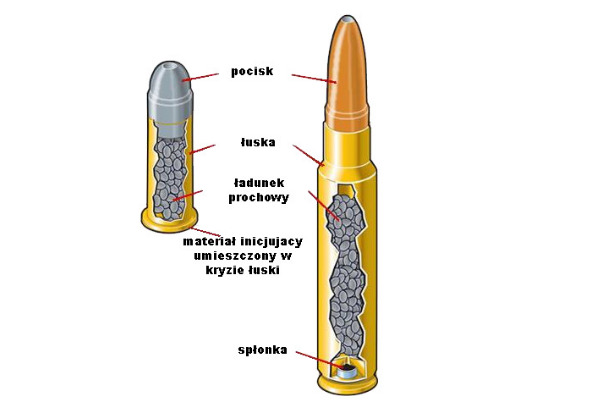
Construction of a handgun and its disassembly and assembly at the Provincial Police Headquarters
What types of handguns do you know used by a qualified security guard:
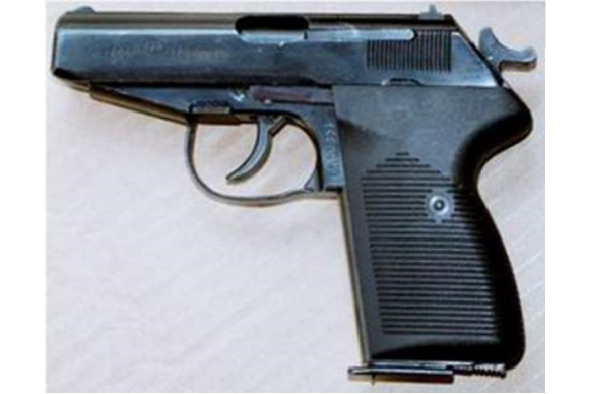
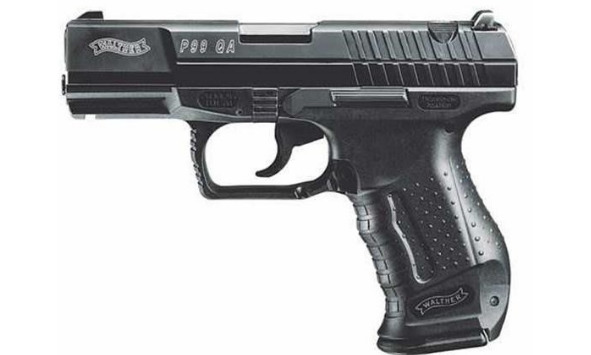
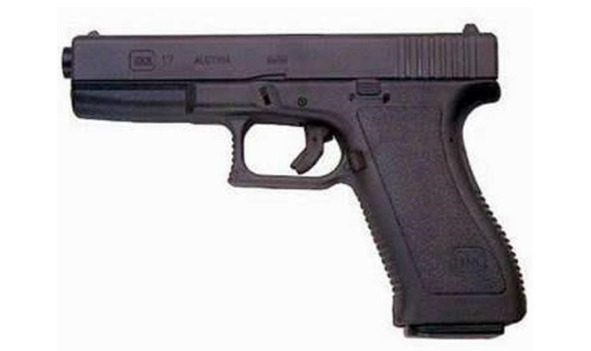
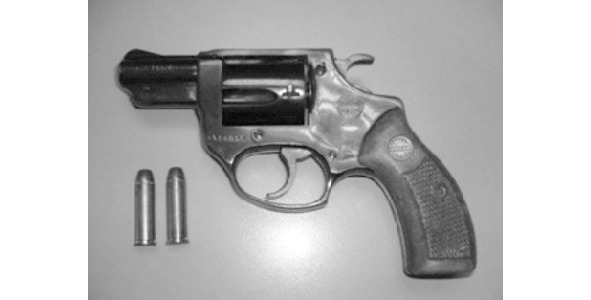
Describe the P-83 pistol:
Semi-automatic weapons; the principle of operation of weapons is the use of Energy free bolt recoil; locking is carried out by the lock’s inertia mass; double-action trigger-impact mechanism DA system; single-row box magazine with a capacity of 8 pieces; 9 x 18 mm Makarov ammunition; initial velocity of the projectile 318 m/s. Disassemble, assemble and discuss the construction of the P-83 pistol. How to disassemble the P-83: Secure weapons;
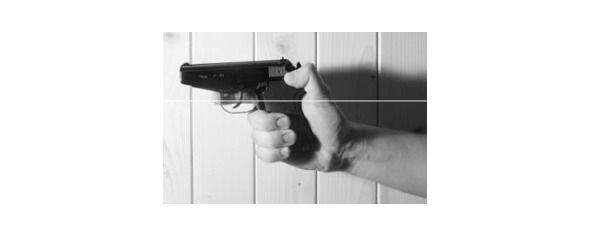

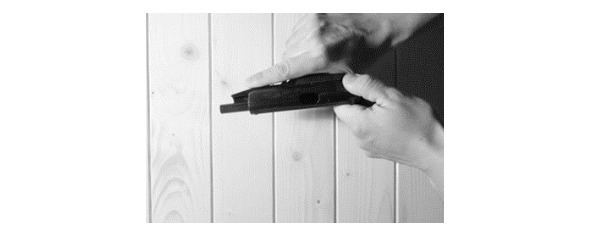
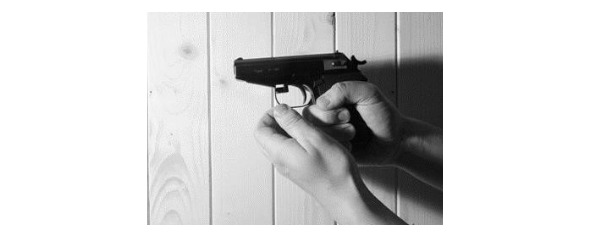
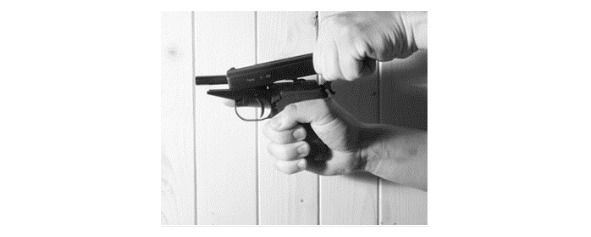
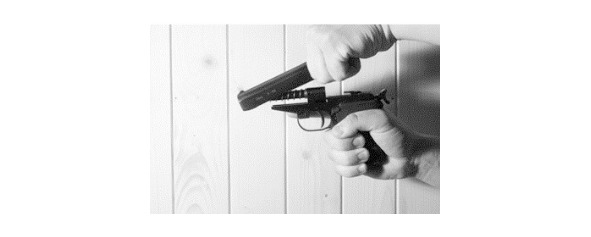
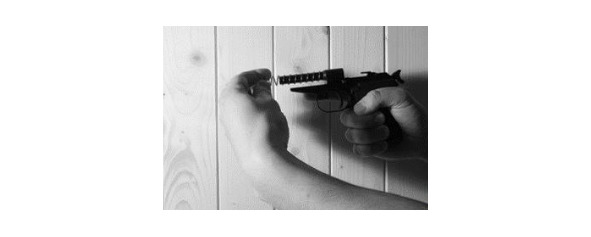
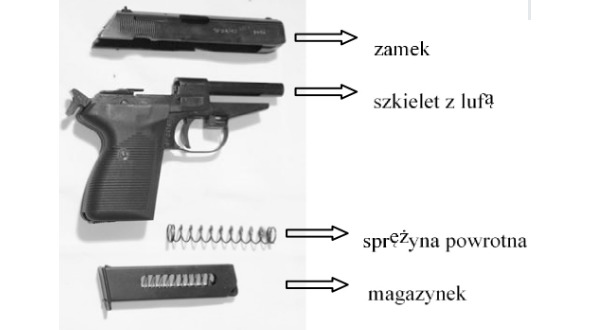
List what components are in the slide of the P-83 pistol
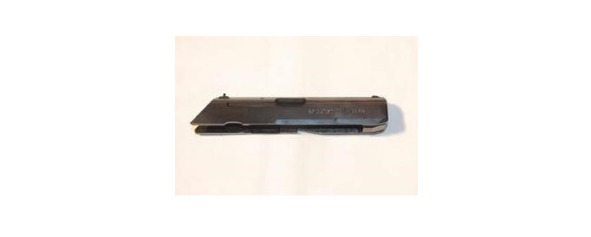
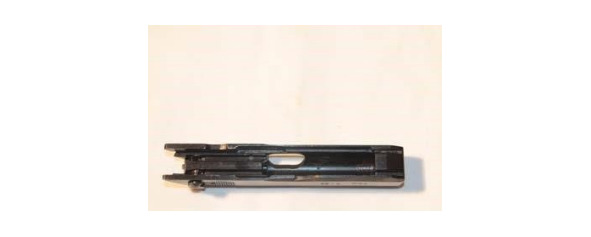
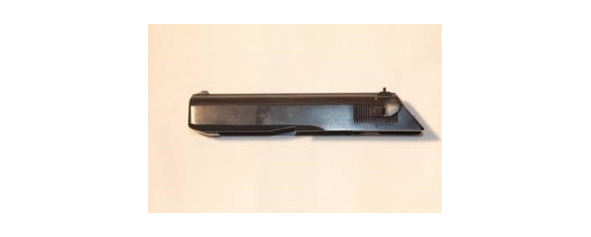
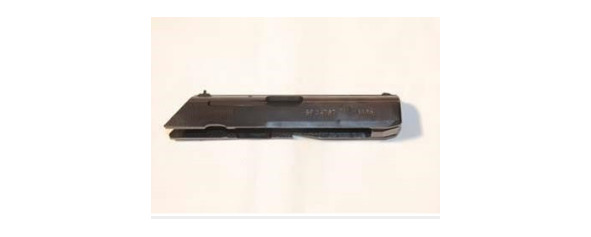
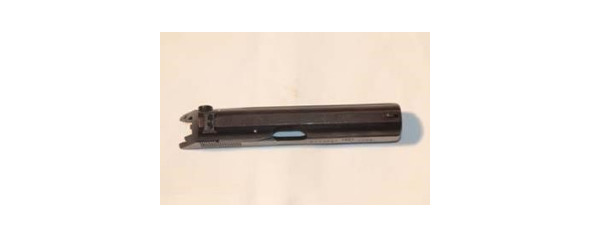

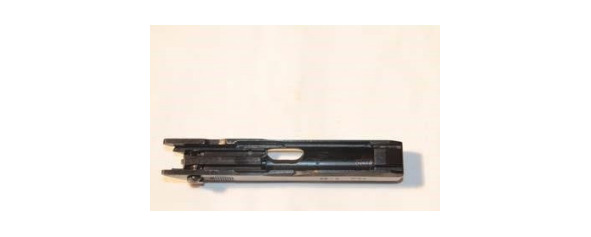
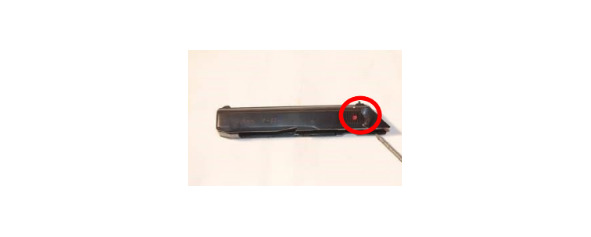
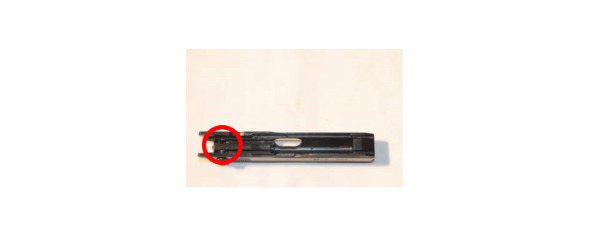
List the slide functions on the P-83 pistol
Introduces the cartridge into the cartridge chamber; closes the barrel during firing; allows you to remove the case (cartridge) from the cartridge chamber; sets the hammer on the cock catch (cocks the cock). Discuss how the accidental fire protection works on the P-83 pistol. During protection, the fuse: immobilizes the firing pin; prevents the hammer from hitting the firing pin; blocks the trigger and impact mechanism; Releases the cock from the rear to the front position. How is the firing pin protected against hammer strike in the P-83 pistol? In P-gun 83, the firing pin is protected against the hammer’s impact in two ways: during securing, the firing pin is lowered and catches its tooth on the breech surface, preventing it from moving forward; the lower position of the firing pin also prevents the hammer from hitting the firing pin, because in this position the head of the firing pin enters the groove in the hammer. Replace the bail function on the P-83 pistol Bow: It protects the trigger against accidental pressing. List the functions of the bumper on the P-83 pistol. Bumper: limits the movement of the slide backwards after a shot, connects the castle to the framework. List the elements that make up the magazine in the P-83 pistol. magazine box, magazine feeder, magazine spring, bottom of the magazine. Discuss the activities related to checking the efficiency of the P-83 pistol. Please check: whether there is no rust, dirt or damage on the metal parts; whether the cock works properly when cocking or releasing the cock from the cocked position; whether the sights are damaged; whether the latch securely holds the magazine in the gun’s grip; condition of the barrel; whether the bolt stops in the rear position on the bolt stop lever when the magazine is empty; operation of gun parts in a secured state (locked trigger and impact mechanism); check the correct operation of the needle.
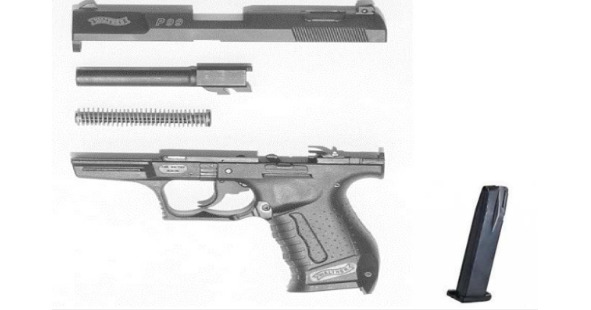
LOCK BARREL RETURN SPRING WITH POLE SKELETON WEAPON
MAGAZINE.
Is there a circuit breaker in the P-99 gun? If so, how does it work? There is no circuit breaker in the P-99. The P-99 pistol has a protrusion on the trigger rail that acts as an interrupter, preventing premature firing.
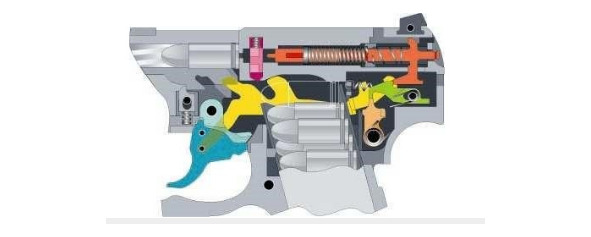
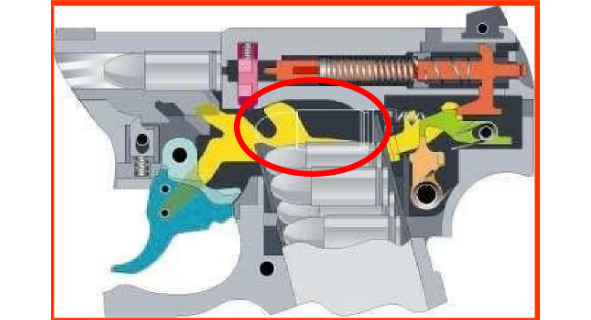
When the cartridge chamber is closed, the protrusion on the trigger rail (acting as a switch) is located in the bolt cutout. When the lock is retracted, it pushes the trigger rail through the protrusion and disengages the trigger and impact mechanism.
Take apart the P-99 pistol and discuss the functions of the ejector:
How to disassemble the P-99 pistol:
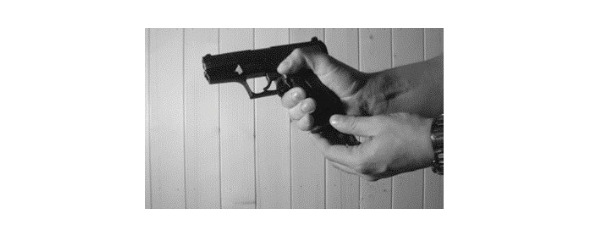
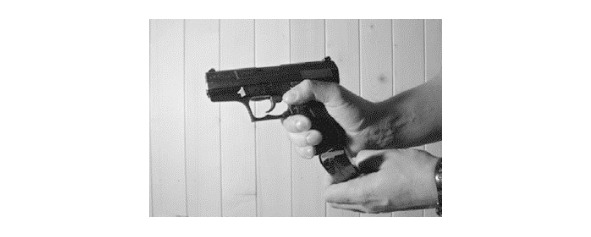
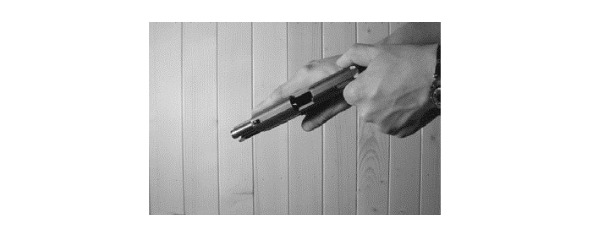
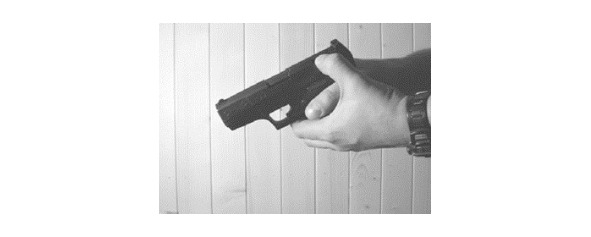
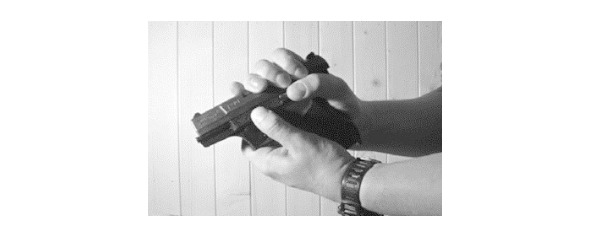
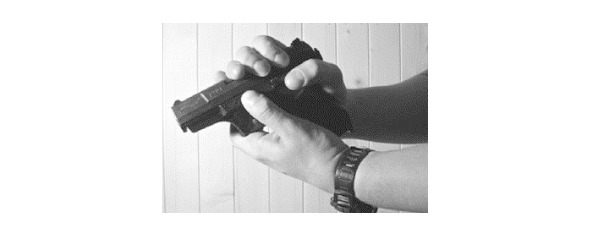
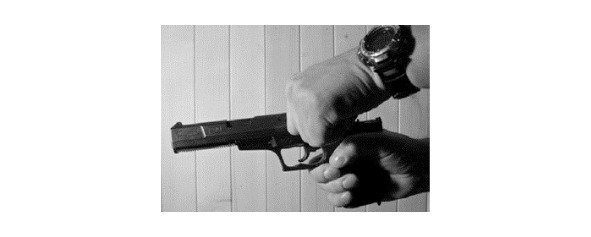
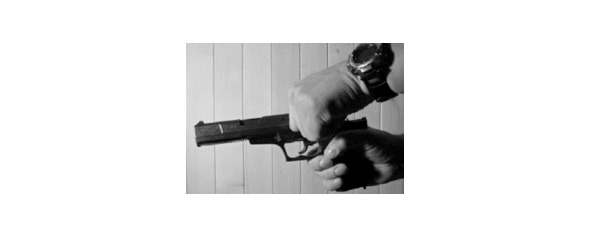
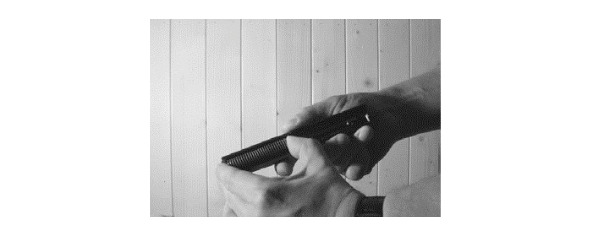
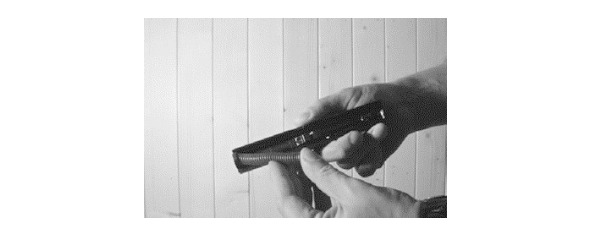
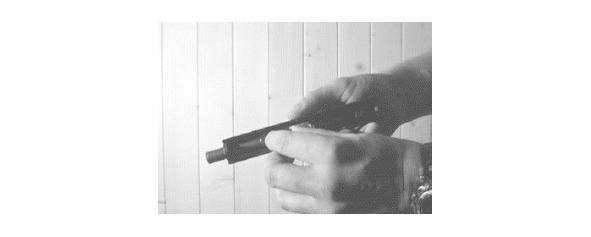
Folding is done in reverse order. Check if the weapon is assembled correctly.
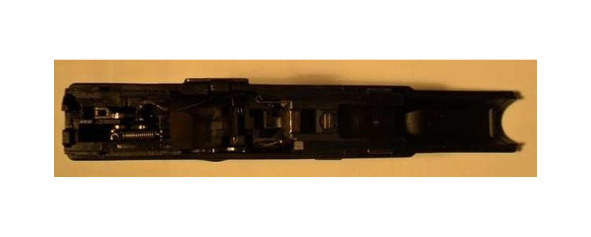
It ejects the shell or cartridge when the weapon is unloaded or a misfire is removed. Discuss how the accidental fire protection system in the P-99 pistol works.
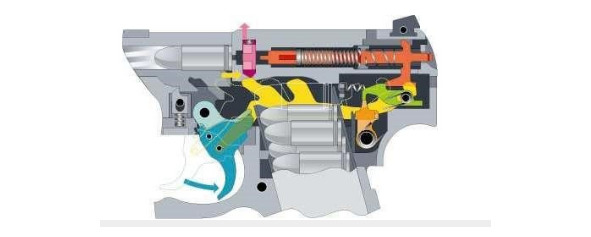
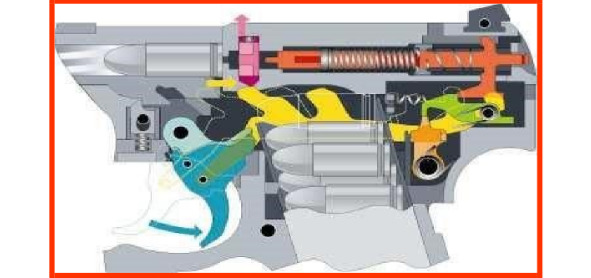
The firing pin lock prevents the firing pin from moving forward by blocking the firing pin channel. Pressing the trigger disables the lock.
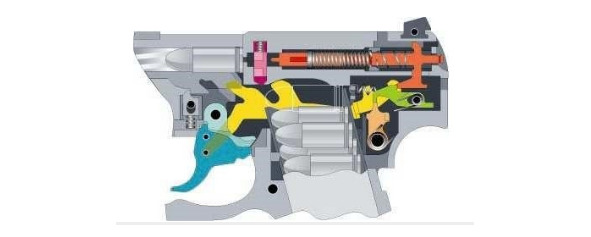
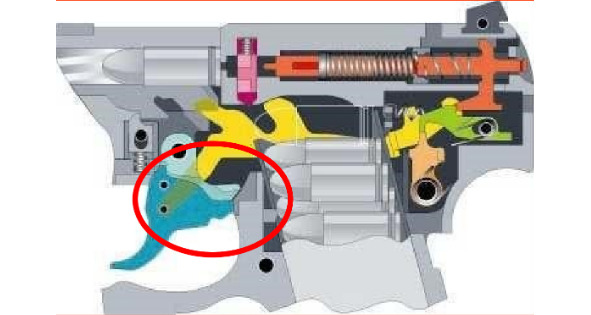
The trigger safety prevents the inertial movement of the shock trigger mechanism backwards, e.g. when the weapon falls. When the trigger is pulled, the fuses turn off automatically. As soon as the shooter takes his finger off the trigger, the gun secures automatically
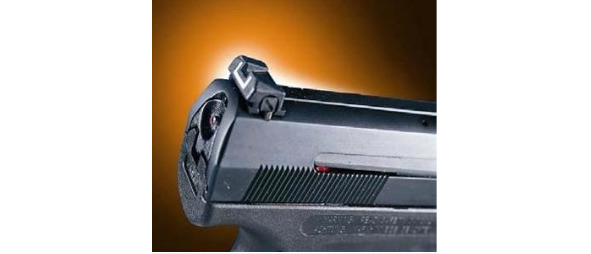
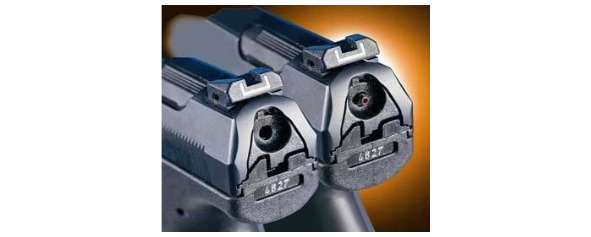
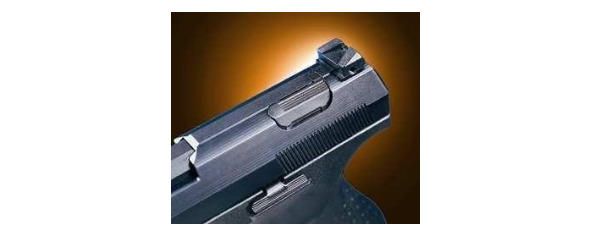
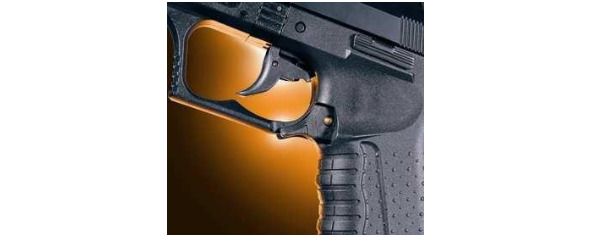
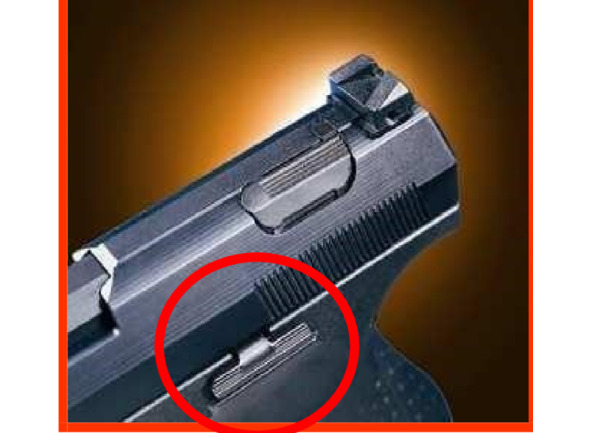
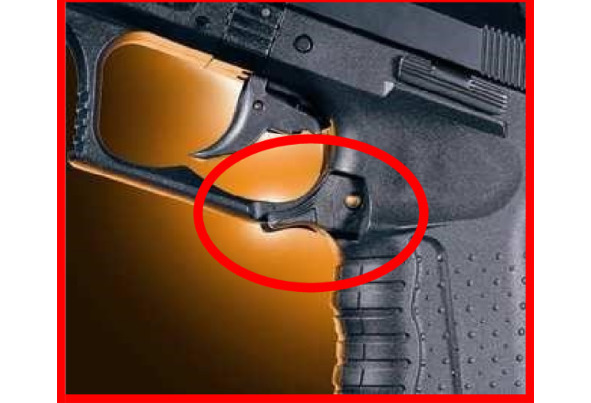
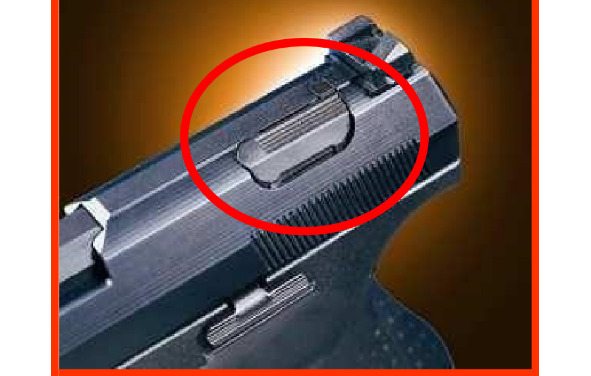
List the slide functions on the P-99 pistol
Sends the cartridge to the cartridge chamber, closes the barrel during shooting, allows you to remove the case (cartridge) from the cartridge chamber, cocks the firing pin. Discuss how the bolt stop mechanism works after the last shot on the P-99 pistol. After firing the last shot, the magazine feeder lifts the bolt release lever, which engages the notch in the bolt, stopping it in the rear position.
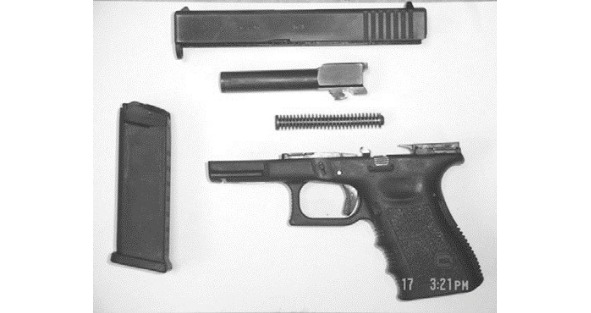
lock, barrel, return spring with pole, skeleton, magazine. What versions of the Glock pistol are used by a qualified security guard: Standard GLOCK 17; Compact GLOCK 19; Take apart your Glock pistol.
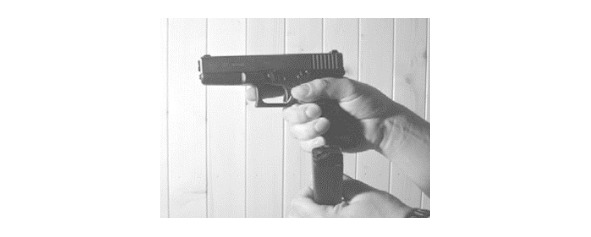
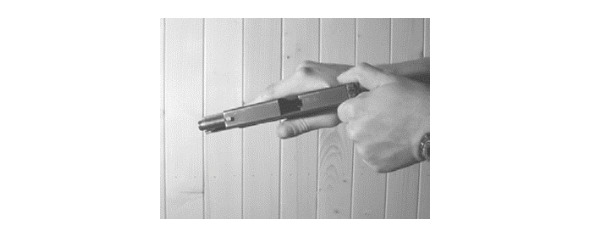
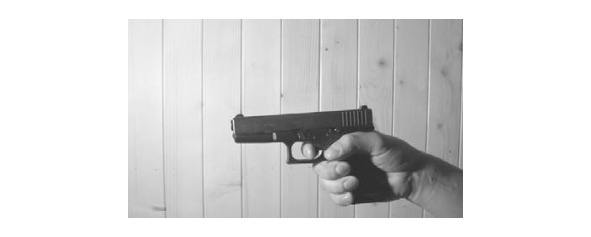
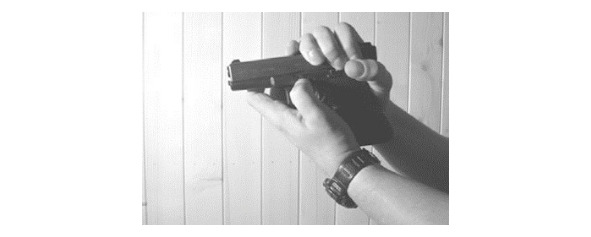
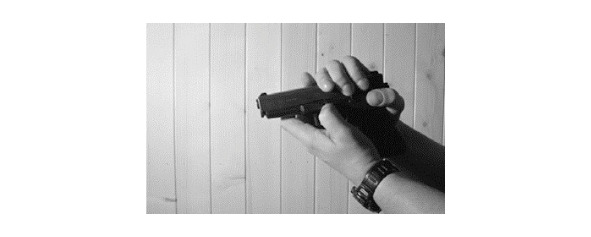
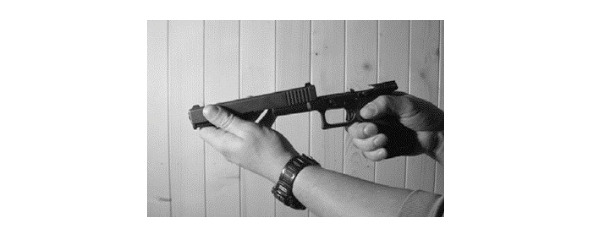
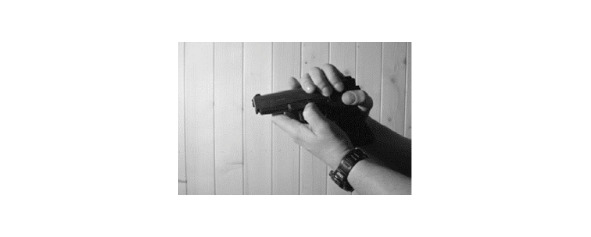
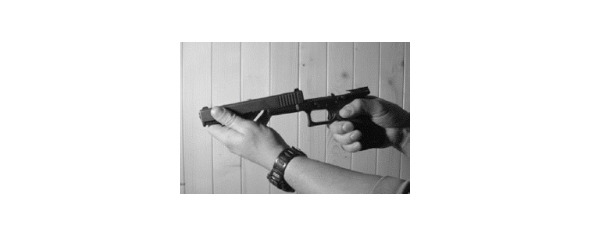
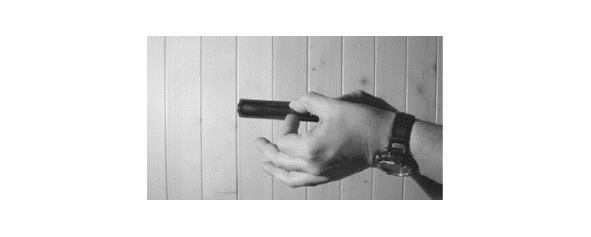
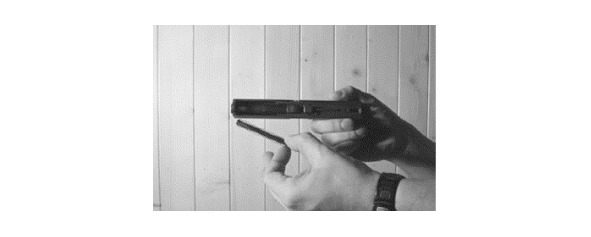
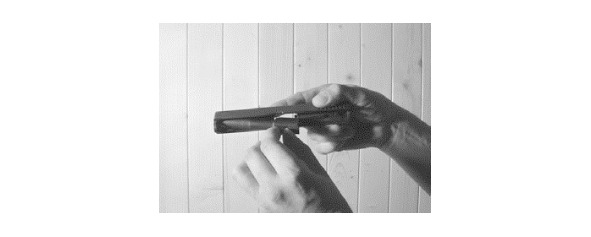
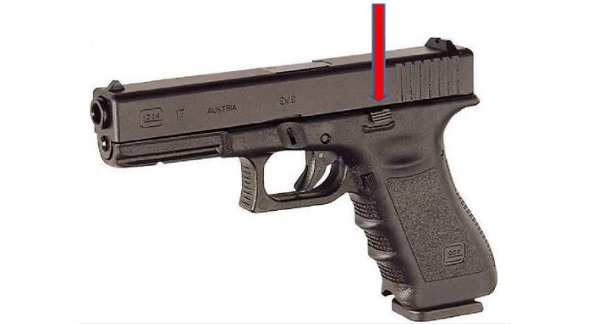
After firing the last round from the magazine, the bolt release lever is raised by the action of the magazine feeder, which in turn is lifted by the magazine spring. The lock catch engages in a notch located in the lock, stopping it in the rear position. Discuss, how the accidental shot protection system in the Glock pistol works. The GLOCK pistol has three fuses that together create a safe operation system. These include: External trigger safety prevents inertial movement of the shock trigger mechanism backwards, e.g. when the weapon falls.
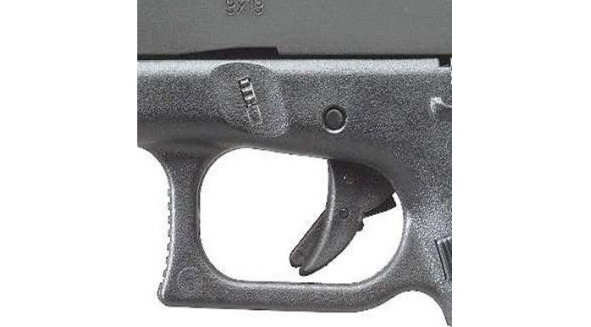
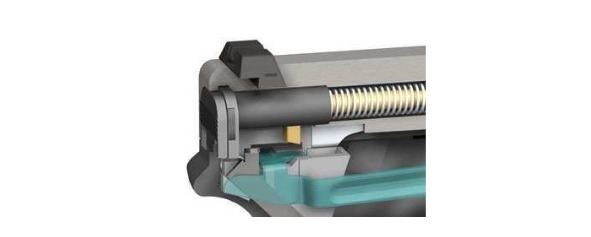
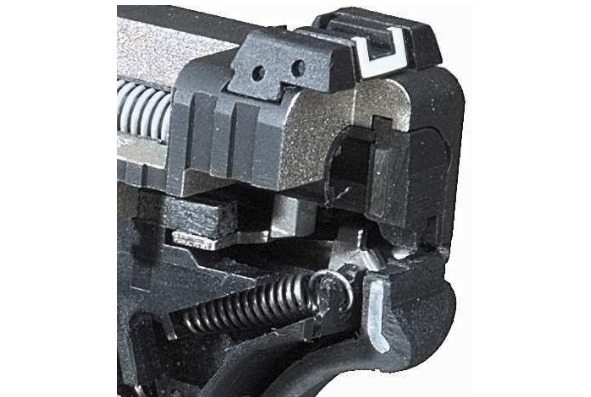
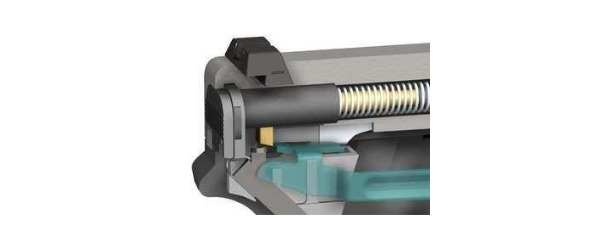

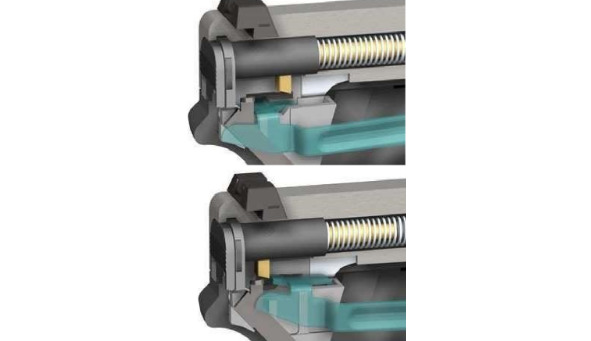
Discuss how the accidental shot protection system on a Glock pistol works
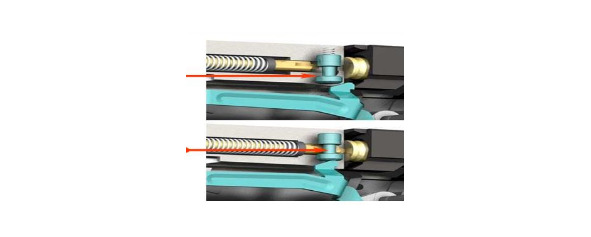
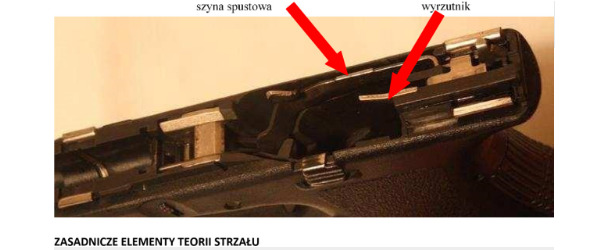
Ballistics division and importance
Ballistics is the science of throwing and moving projectiles, it is divided into:
Internal ballistics — dealing with phenomena occurring in the barrel. Its main task is to determine the relationship between the pressure of the powder gases, the velocity and the path of the bullet in the barrel. Its parameters have a very large impact on the technical solutions of the weapon;
External ballistics — dealing with issues related to the movement of the projectile after leaving the barrel of the weapon. This is one of the most important issues in shooting, because in order to hit the target with a bullet, you must first know how it will fly in the air, i.e. where it will be at a given time.
After leaving the barrel, the bullet travels thanks to the force of inertia; terminal ballistics (target ballistics) — dealing with phenomena occurring at the point of contact between the projectile and the target. It is important in calculating the strength of shields and the stopping power of bullets.
What is a shot?
A shot is the ejection of a projectile from the barrel caused by the action of powder gases generated during the combustion of a powder charge. The pressure of the gases on the bottom of the case forces the bottom into the face of the bolt. Under the influence of pressure on the walls of the case, they adhere tightly to the walls of the cartridge chamber, preventing gases from rupturing backwards. The powder gases spread towards the direction of least resistance, i.e. the bottom of the bullet, setting the bullet in motion. Due to the forward movement, the projectile cuts into the threads, creating a spinning motion, and is thrown out of the barrel towards the extension of the barrel axis.
What characterizes the shot phenomenon?
The shooting phenomenon is characterized by: very high gas pressure, high temperature of gunpowder gases, a short period of the phenomenon, the rapidly changing volume of the burning powder charge. Explain the concept of initial velocity. The initial velocity is the speed of the projectile at the moment it exits the barrel.
What does the initial velocity of the bullet depend on?
The initial speed depends on: barrel length, bullet mass, the mass of the powder charge.
What is firearm recoil?
The recoil of a firearm is the backward movement of the weapon when fired, caused by the action of the pressure of powder gases through the bottom of the case on the lock.
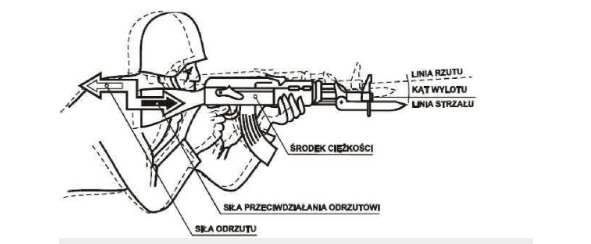
What is a firearm drop?
The recoil of a firearm is the rotation of the weapon in the vertical plane during the shot, caused by the asymmetry of the weapon’s center of gravity in relation to the barrel axis and the action of recoil and recoil braking forces. List the basic elements of accurate shooting. The basic elements of accurate shooting are: shooting stance, weapon grip, matching of sights, breath, working on the trigger, holding in after the shot. List the weapon irregularities that affect shot accuracy: damage to the barrel (deformed barrel muzzle, barrel curvature, barrel decalibration, abrasion or rounding of the edges of the threaded part of the barrel, excessive heating of the barrel during shooting); rearranged, damaged sights (deformation of the front sight, deformation of the sight frame, side play of the sight, incorrect positioning of the sights in relation to the barrel axis).
What is scatter?
This is a natural phenomenon of bullets falling in different places when firing the same weapon and in the same conditions. Explain the terms: jamming, blocking, firearm failure. Weapon jam — a weapon malfunction that can be removed by the shooter while firing. Weapon jam — a weapon malfunction that can be removed by the shooter during shooting, but requires greater skills from the shooter and sometimes additional equipment, e.g. a cleaning rod (usually caused by the user’s fault). Weapon malfunction — malfunction of the weapon, impossible to remove by the shooter during firing
.What are the causes of jams not closing the cartridge chamber?
Improper reloading, contaminated gun, weak return spring, damaged gun.
What are the causes of a jam a misfire?
Faulty cartridge, contaminated needle channel, damaged firing pin or firing pin spring.
What are the causes of a jam a stuck case?
Damaged ejector or exhaust assembly, contaminated gun, weak or damp powder charge.
What are the causes of a jam a skewed cartridge?
Contaminated gun, improper reloading, damaged magazine.
What are the symptoms of a jam not closing the cartridge chamber?
Play on the trigger, slightly recessed zipper, the cartridge flange is visible through the shell ejection window.
What are the symptoms of a jam a misfire?
When you press the trigger, the hammer drops (the firing pin is released), after which no shots are fired.
What are the symptoms of a jam a stuck case?
play on the trigger, the lock is significantly recessed, a stuck shell visible through the shell ejection window.
Kup książkę, aby przeczytać do końca.
